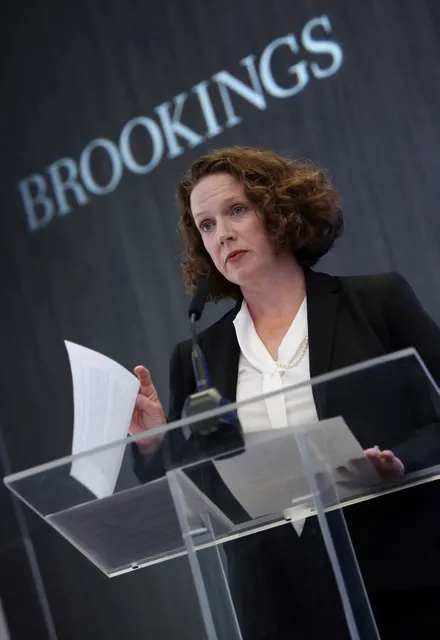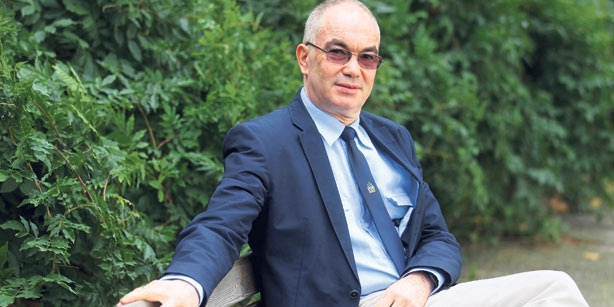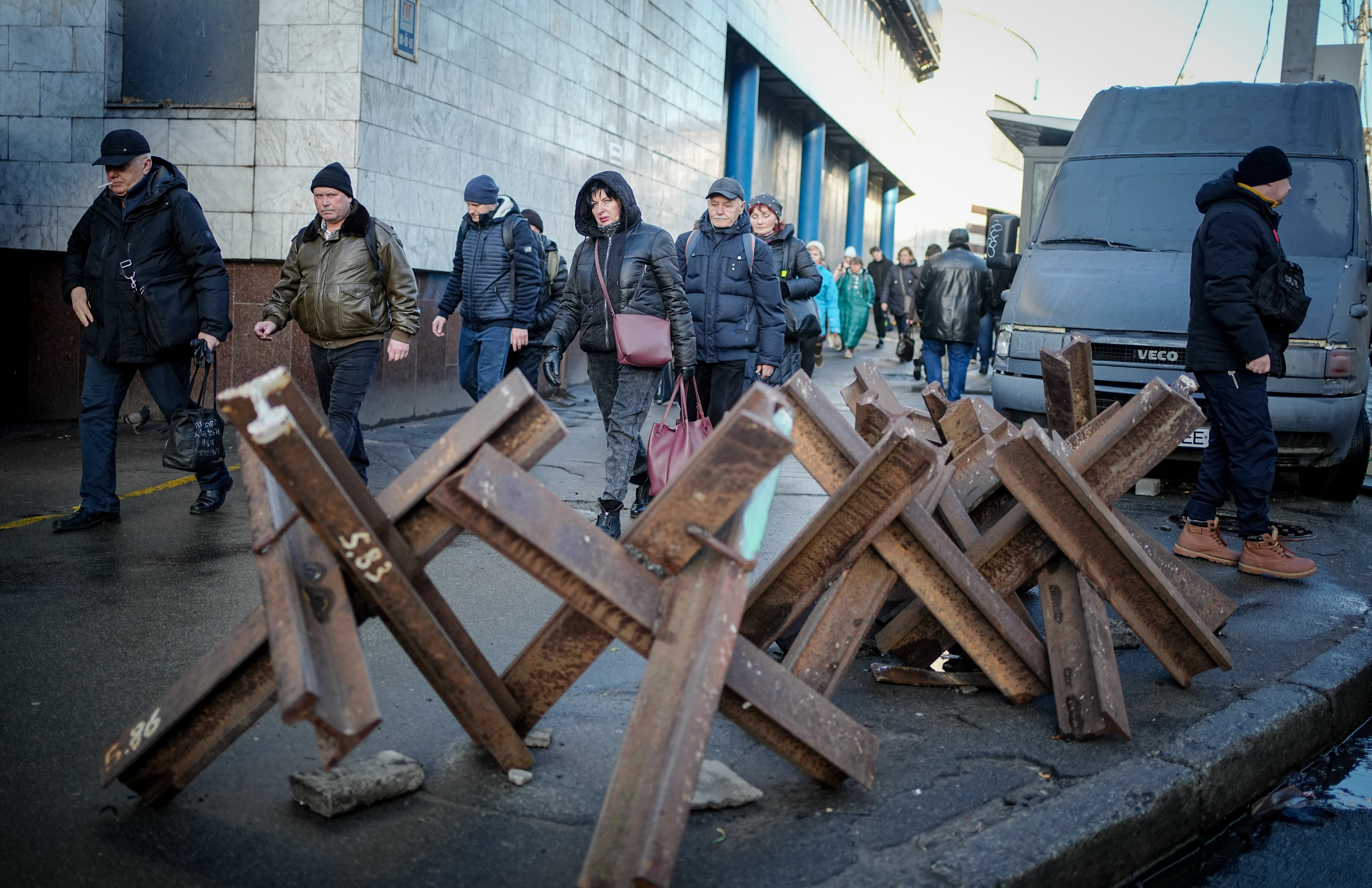
Lessons from Ukraine
Editor’s Note: This piece is part of a series of policy analyses entitled “The Talbott Papers on Implications of Russia’s Invasion of Ukraine,” named in honor of American statesman and former Brookings Institution President Strobe Talbott. Brookings is grateful to Trustee Phil Knight for his generous support of the Brookings Foreign Policy program.
Introduction
Constanze Stelzenmüller
At the one-year anniversary of Russia’s full-scale invasion of Ukraine on February 24, 2022, much Western commentary features a mixture of relief and self-congratulation. Both are deserved in considerable measure. Ukrainians have proved astonishingly brave and resilient in the face of an assault of a scale and brutality not seen in Europe since 1945. The war galvanized the trans-Atlantic alliance into unity and action, with forceful and generous American leadership, and an unexpectedly muscular role played by the European Union. Indeed, the United States and Europe have been highly effective in leveraging each other’s diplomatic, economic, and military assets to support Ukraine, and constrain Russia. Public opinion, too, has remained remarkably supportive of aiding Ukraine.
At the same time, the alliance has been careful to draw red lines. Western leaders have said throughout that they are giving Ukraine the means to defend itself, but will not become parties to the conflict, for instance by establishing a no-fly zone or deploying NATO troops. Russia’s president, Vladimir Putin, has also — despite his repeated assertions that Russia is being attacked by the West, and bald-faced threats of escalation — observed red lines himself by avoiding overt military action against Ukraine’s supporters. And despite ambivalence in the rest of the world in view of calls to take sides on behalf of Ukraine, it is notable how many non-Western countries have spoken out in condemnation of Russia’s actions, or (like Japan and South Korea) sent money and materiel to Kyiv.
Nonetheless, for what may already be the defining crisis of our era, crucial questions remain unresolved: how to avoid an escalation of the war; how and when to bring this war to an end; how to stop sanctions evasion; how to avoid impunity for the perpetrators and bring them to justice; how to assure the effectiveness of NATO deterrence and defense; how to prevent key non-Western powers — above all China — from throwing their full weight in with Russia; how to mitigate the immense costs of supporting Ukraine and the global consequences of the war; how to reconstruct Ukraine and bring back refugees; how to redefine the European security order against an imperialist Russia; and how to do better at protecting the world from the depredations of autocratic great powers.
This much is clear: 2023 could be a decisive year for the future of Ukraine, the West, and global order and security — for better, but also for worse. Below, 16 Brookings scholars examine the lessons of the first year of Russia’s war against Ukraine and look ahead to coming challenges.
Fiona Hill observes that Russia’s attack on Ukraine is a full-scale assault on the post-World War II global order and demands nothing less than a U.S.-led revamping of the international security system. Restoring European security and deterrence will require the United States and its allies to persuade skeptical middle powers that a world order that is safe for all nations can only be based on international law and the United Nations Charter. Steven Pifer addresses the thorny question of how Ukraine can best protect itself against future Russian aggression; he argues that the West’s red lines — NATO boots on the ground and membership for Ukraine — mean that Kyiv must be given all the arms it needs to defend itself.
James Goldgeier explains that the Biden administration, after a remarkably adept and forceful response, must nonetheless now contemplate a long and demanding war; and he cautions America’s allies that the bipartisan consensus around supporting Ukraine may not last. Tara Varma writes that the invasion of Ukraine provoked a strategic awakening in Europe. But the coming months may well see intra-European division — and Europe’s security dependency on the United States — resurface. Aslı Aydıntaşbaş charts Turkey’s complex balancing act between Russia and the West under President Recep Tayyip Erdoğan and predicts that — despite a potential post-earthquake warming of relations between Ankara and its NATO allies — Turkey will remain ambivalent as long as there is no clear victor in Ukraine.
Patricia M. Kim maintains that China’s “no limits” partnership with Russia will endure because both powers share an interest in challenging what they perceive as a Western-dominated global order. But China also stands to lose much more than Russia from global insecurity. Western powers should use this leverage to get Chinese leaders to constructively influence Moscow to prevent escalation in Europe. Suzanne Maloney points out that Iran’s emergence as the only state to provide offensive weaponry to Moscow reflects a decisive shift in Tehran’s risk tolerance and its geopolitical orientation toward Russia and China. It puts paid to efforts by the Biden administration and its European allies to resuscitate the 2015 Iran nuclear deal, as Tehran nears nuclear breakout.
Tanvi Madan argues that the Western-led coalition supporting Ukraine should not be surprised by the reservations and ambivalence of non-Western powers like India. Instead, the West should highlight how Russian imperialism is a threat to the global order and offer real alleviation to these countries’ concerns. Bruce Jones says the West needs to face up to a future of unstable great power relations and the risk of manifold disruptions from deepening global interdependence; building security will be hard and costly for democracies.
Caitlin Talmadge notes that the danger of nuclear escalation has constrained both Russia and the West in this war, but other states are likely to reconsider the importance of having nuclear weapons of their own. Melanie W. Sisson interrogates the Western alliance’s many failures to predict the course of this war and warns that a focus on incremental, tactical successes could mask a real problem: the absence of a compelling vision of how to end it. Michael E. O’Hanlon is struck by the echoes of World War I: not just in the battlefield dynamics, but also in the prospect of a long war of attrition — and especially in the challenge of finding a peace settlement that does not merely create a pretext for the next horrific war.
David Wessel remarks that some of the war’s economic lessons challenge conventional wisdom: the resilience of Ukraine’s economy — as well as Russia’s, despite unprecedented Western sanctions — and the ability of Europeans to wean themselves off Russian fossil fuel imports. Samantha Gross describes the global tensions between climate change mitigation policies and the energy market disruptions unleashed by the war — as well as the extraordinary efforts made by governments, businesses, and consumers to soften their impact. But she cautions that 2023 might witness significant new disturbances.
Finally, Sophie Roehse and Kemal Kirişci remind us of the horrific human cost paid by Ukrainians: a displacement crisis on a scale and speed not seen in Europe since World War II. Nearly 40% of the country’s citizens have been driven from their homes in the past year; more than 8 million are refugees in Europe or North America, and more than 5 million are internally displaced. Their ability to return safely to their homes will determine Ukraine’s ability to reestablish itself as a functioning and prosperous state in Europe.
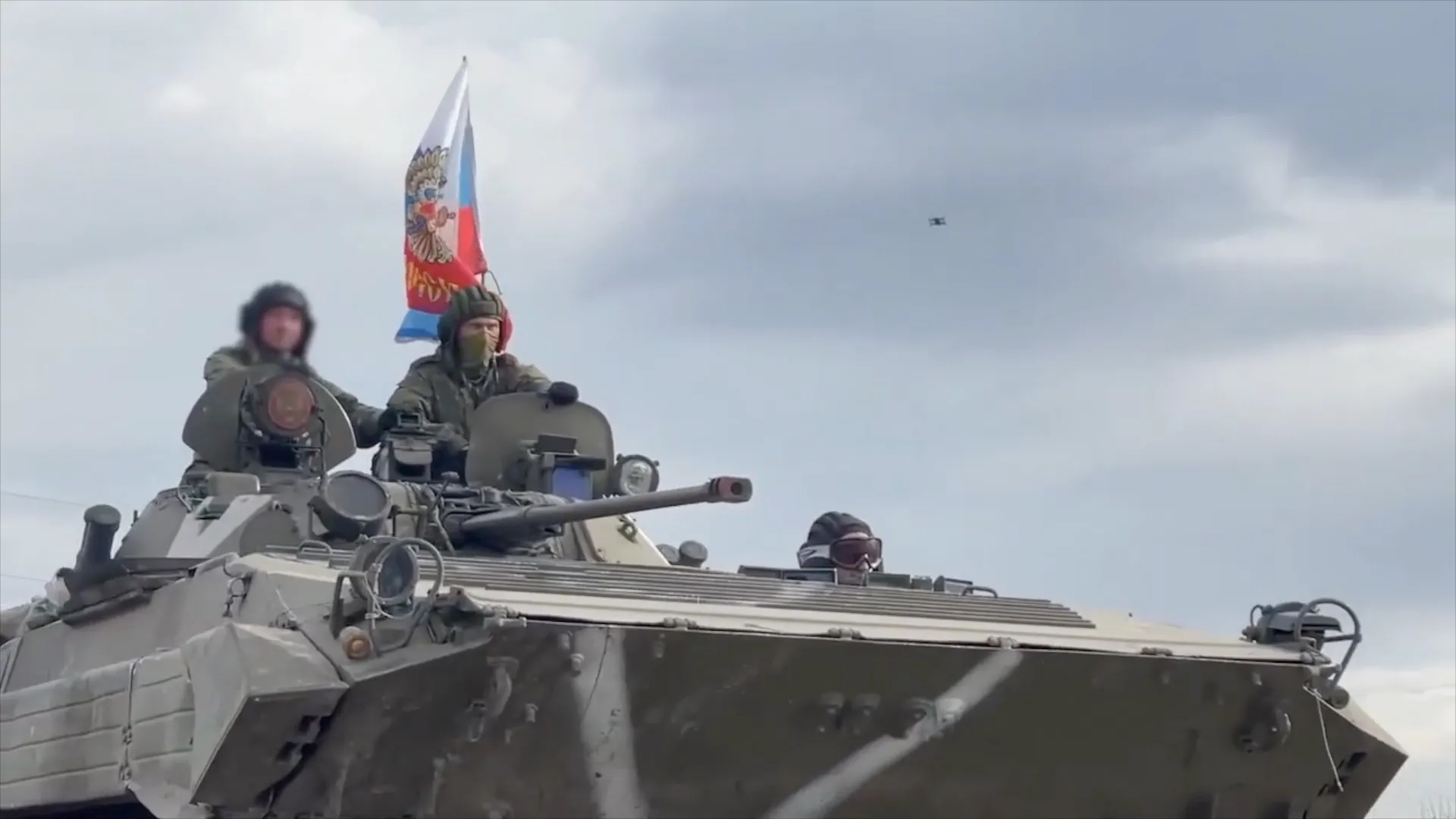
Russia and European security
Assault on global order
Fiona Hill
This commentary is based on Dr. Hill’s opening statement to a Senate Armed Services Committee hearing on global security challenges and strategy on February 15, 2023. Video of the hearing can be found here.
The war in Ukraine has necessitated the third intervention by the United States in a European conflict in a little over a century; and what will likely be its third attempt at revamping the international security system. Russia’s invasion of Ukraine in February 2022 was an assault on the post-World War II global order. This wasn’t just an American-imposed order but a set of rules that all nations, including Russia and its predecessor, the Soviet Union, had agreed to. Russia violated the United Nations Charter and fundamental principles of international law by attacking an independent state that had been recognized by all members of the international community — including Russia itself — for more than 30 years.
The current challenge in Europe is how to craft more durable regional security arrangements that roll back Russia’s land grab in Ukraine, are embraced by all Europeans, and set a precedent for reinvigorating the larger set of international agreements. We need to find a formula that is not entirely dependent on U.S. military and economic power and political leadership to ensure its long-term success.
The European security environment was ruptured in 2014 when Russia annexed Ukraine’s Crimean Peninsula and sparked off a brutal proxy war in the Donbas region. None of the United States and Europe’s mechanisms and practices for keeping the peace after World War II and during the Cold War had much, if any, effect on deterring Russia from seizing Crimea or attempting to take Kyiv and the rest of Ukraine in 2022. Western deterrence failed in part because American and European policymakers never meaningfully emphasized the West’s redlines. Indeed, one might even ask, “what were the redlines?” The West certainly did not appear to uphold the postwar principle of ensuring independent states’ sovereignty and territorial integrity. Instead, after 2014, European leaders, led by German Chancellor Angela Merkel, rushed to push Russia’s annexation of Crimea to one side and broker a quick peace settlement in Donbas — the Minsk Accords, which would have limited Ukraine’s sovereignty if fully implemented.
We have spent more time contemplating the perils of provoking Russia’s mercurial president, Vladimir Putin, than the merits of bolstering Europe’s resilience and capacity to limit Putin’s coercive power.
The tepid Western political response to Russia’s violation of Ukraine’s territory and the limited application of international sanctions after this first invasion convinced Moscow that attacking Ukraine was not, in fact, a serious breach of post-World War II norms. Indeed, Western commentary since 2014 has frequently focused on the risks of stepping over Russia’s redlines, rather than enforcing the West’s. We have spent more time contemplating the perils of provoking Russia’s mercurial president, Vladimir Putin, than the merits of bolstering Europe’s resilience and capacity to limit Putin’s coercive power.
In charting a path forward, we need to recognize that the war in Ukraine has been brewing for decades because of a key distinction in the way the international community approached the collapse of the Soviet Union and the former Yugoslavia in the 1990s. In the case of Yugoslavia, the country was dissolved without the recognition of a single successor state. Serbia’s territorial claims against its neighbors were rejected. In the case of the USSR, the United States and every other country recognized Russia as the sole successor state. Moscow inherited the Soviet Union’s U.N. Security Council seat and its other privileges and obligations, as well as, it seemed, the Soviet Union’s Cold War sphere of influence in Eastern Europe. Ukraine and other former Soviet republics fell into a gray zone where Russia’s interests trumped theirs’. They were deemed Russia’s “near abroad.”
Putin has repeatedly stated that Moscow has the right to dominate this neighborhood and reclaim “lost” territory. For Putin, the war in Ukraine is a continuation of the Soviet struggle with the United States to carve up Europe after 1945. Russia still sees NATO as a U.S. Cold War bloc — a cover for American imperialism, not an alliance of equals to ensure common defense and security. In this context, NATO’s post-Cold War expansion and Ukraine’s reluctance to implement the Minsk Accords in Donbas became the current war’s casus belli.
Redefining European security and restoring deterrence will involve explicitly countering this narrative. Building an international coalition against Russia’s aggression to facilitate an eventual settlement of the war will require the same. The United States and its allies must clarify and emphasize that they are supporting Ukraine on the battlefield to uphold the United Nations Charter and international law. Building on President Joe Biden’s historic February 20 visit to Kyiv to underline enduring U.S. support for Ukraine, Washington needs to step up diplomatic efforts, including in the U.N., to convince friends and ambivalent middle powers in the so-called Global South that the West’s goal is not to retain supremacy in Europe but to keep the world safer for every nation. If Russia succeeds in carving up Ukraine, then the future sovereignty and territorial integrity of other states could be imperiled. Upholding international norms must once again be a central part of U.S. global security strategy.
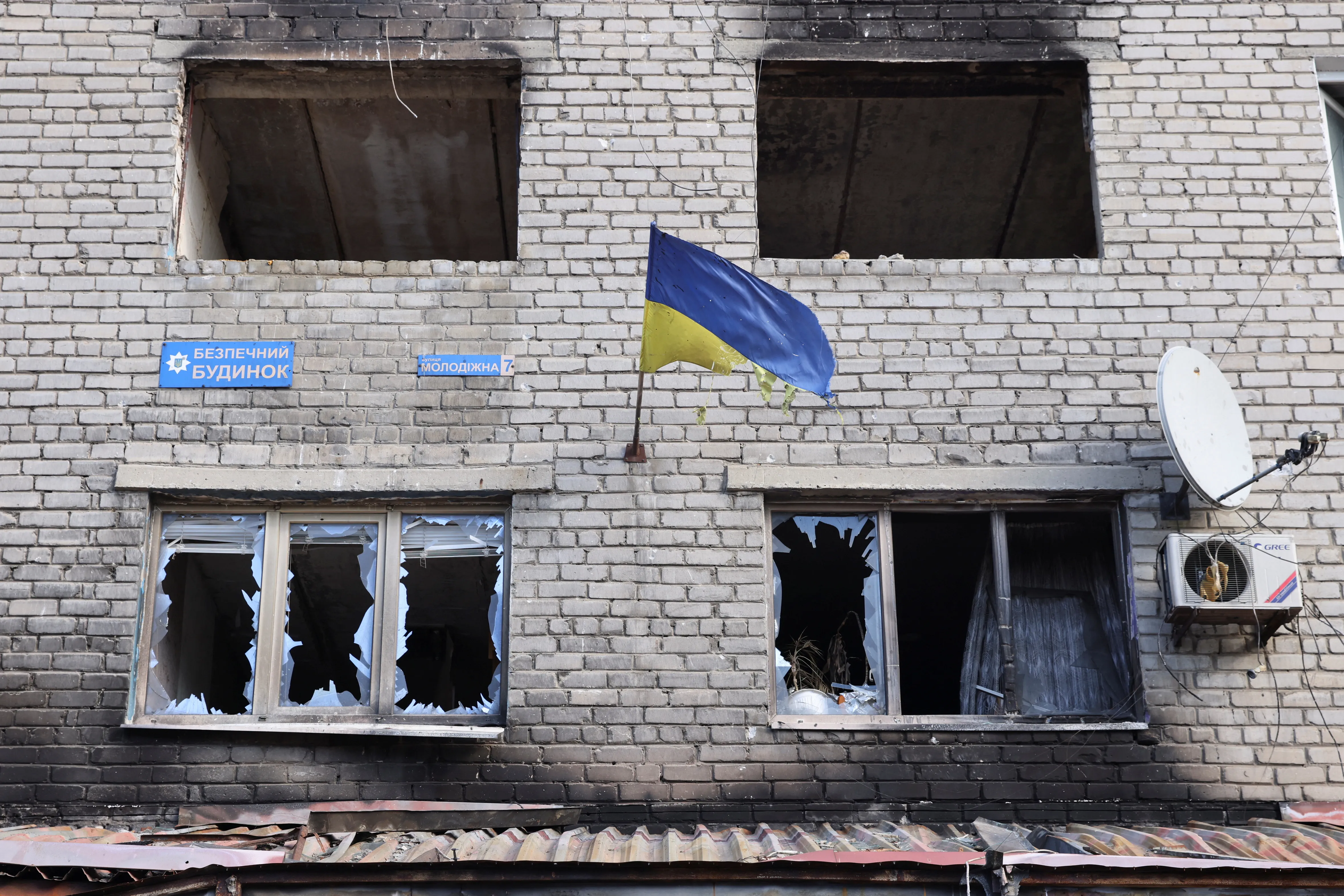
Ukraine
Arm Kyiv for self-defense
Steven Pifer
Ukraine has surprised many, not least the Kremlin, with its resistance against the aggression that Russian President Vladimir Putin unleashed in February 2022. The tenacity, skill, and courage of Ukraine’s soldiers, and many of its civilians as well, have frustrated an all-out invasion launched by what was regarded as the world’s second or, at least, third most powerful military.
The Russia-Ukraine conflict has demonstrated that modern force-on-force warfare consumes much in terms of ammunition, materiel, and soldiers’ lives. That provides an important lesson for Western militaries, now in the process of restoring their focus on traditional territorial defense in the face of a very evident Russian security threat to Europe.
By dint of tactical agility and innovation, a lesser-armed but more motivated Ukrainian military has withstood the attacks of a larger and far more powerful adversary. The West can learn from that, and, as it integrates more sophisticated Western arms into its operations, the Ukrainian military will want to maintain that agility and innovation.
As for the Ukrainian civilian population, it has shown remarkable resilience, particularly as the Russian military launched attacks on electric power, municipal central heating, and other infrastructure to make up for its lack of progress in battle. The lesson here is that a people who see themselves in an existential fight for their national identity, democracy, and land will endure great hardship.
The West has helped Ukraine by providing weapons, financial assistance, and intelligence support. Ukraine needs to maintain and expand that flow.
At the same time, Kyiv has to recognize that the West has drawn a firm red line: no troops. NATO members have armed and trained Ukrainians, but no member has offered to join the fight. President Joe Biden, NATO Secretary General Jens Stoltenberg, and other Western leaders ruled out a no-fly zone over Ukraine, as it raised the prospect of U.S. and NATO pilots shooting down Russian planes and conducting strikes against Russian air defenses — perhaps in Russia itself.
Looking to the longer term, Kyiv should bear the West’s red line in mind, including as it considers postwar security arrangements.
To be sure, Ukraine has not asked for troops. Still, looking to the longer term, Kyiv should bear the West’s red line in mind, including as it considers postwar security arrangements. It is difficult to see Moscow winning — at least in the sense implied by the Russian army’s multiple attack vectors in February 2022, which suggested Kremlin goals of occupying Kyiv and perhaps the eastern one-half to two-thirds of Ukraine. However, a Ukrainian victory or a stalemated end to the current fighting would still leave Ukraine facing the risk of future Russian aggression.
To deal with that, President Volodymyr Zelenskyy understandably seeks NATO membership. Ukraine meets the democratic standards that NATO expects of aspiring members and, prior to the war, had built a functioning if flawed market economy. Ukraine’s military has proven a force to be reckoned with; just ask General Valery Gerasimov.
Nine European members of NATO have expressed support, as has Canada. However, membership would require the consent of all 30 alliance members (32 once Finland and Sweden enter). Each would have to be prepared to go to war against Russia for Ukraine. True, with Ukraine in the alliance, NATO’s military would be added to the equation of helping Ukraine deter a new Russian attack. That seems less risky than what might happen if NATO forces were to enter the ongoing war.
Still, a majority of NATO members currently deem that risk too great. This suggests a serious membership bid would have little prospect in the near term.
In the future, Ukraine will need a modernized military to deter a new Russian assault. Kyiv should look to the West for the weapons to arm that military. That means Abrams and Leopard tanks, Bradley and other fighting vehicles, ATACMS surface-to-surface missiles, and fighter aircraft, among other things.
Many Western leaders seem readier to agree to arm Ukraine than to support its NATO membership. Now, and in a post-conflict situation, Kyiv should ask for — and the West should pay — a significant price in weapons in return for the delay of Ukraine’s NATO quest.
That does not mean NATO membership comes off the table forever. Ukraine should continue its preparations so that, when the political window opens, it can pass through. In the meantime, a strongly armed Ukraine would put Ukraine’s defense where it best belongs: in the hands of Ukrainians.
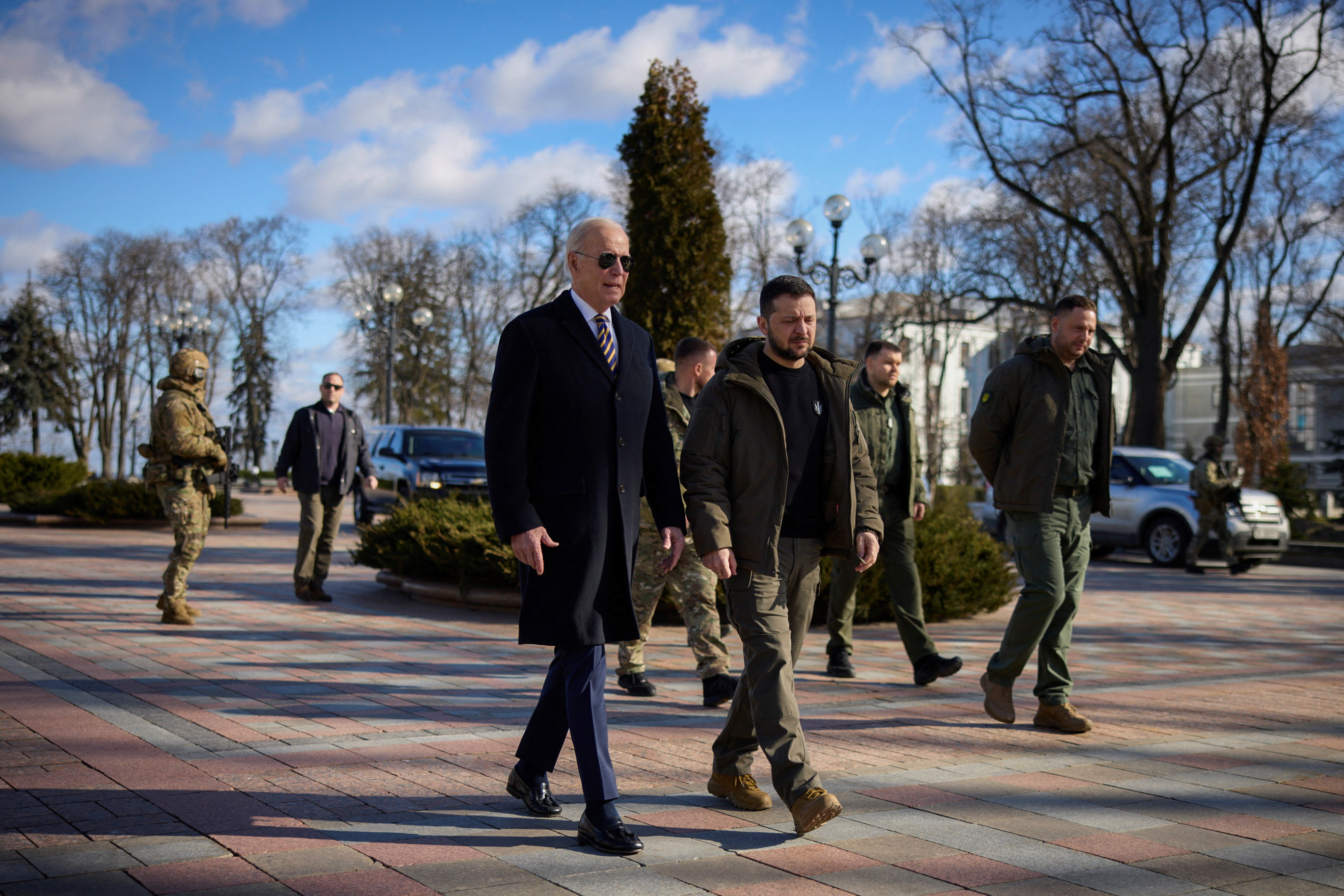
United States
Leadership, but for how long?
James Goldgeier
Considering how the United States responded to the 2014 Russian invasion of Ukraine, namely with economic sanctions and supplying only non-lethal military aid to Kyiv, one could be forgiven for being repeatedly surprised over the past year. Perhaps if Russia had succeeded in taking over much of Ukraine right away, toppled the government, and installed a puppet regime, the U.S. response in 2022 would not have been dramatically different than it was eight years earlier. But despite Russian President Vladimir Putin’s longstanding obsession with controlling Ukraine and his apparent belief he could get away with it, the Russians failed in their drive to occupy Kyiv, and Ukrainian President Volodymyr Zelenskyy did not flee to form a government in exile. And the rest of Europe finally realized what the Balts and Poles had been trying to tell them for years: Putin was a threat to the peaceful continental order the Europeans thought they had achieved after the end of the Balkans wars more than two decades ago.
With Ukrainians fighting valiantly against a brutal invasion, the United States and its allies stepped into the breach to assist them. After four years of his predecessor denigrating and dismissing allies, all the while expressing admiration for Putin, President Joe Biden was eager to rally American allies and partners to support Ukraine. If there was anything his long political career as senator, vice president, and president prepared him for, it was leading the trans-Atlantic alliance in a vigorous response to the horrific Russian attack. While explicitly refusing to send American troops into the fight to prevent a direct NATO-Russia conflagration, Biden committed nearly $47 billion dollars in U.S. military assistance after February 2022, with increasing levels of lethality, and he rallied NATO allies and partners to send significant military assistance of their own. Over time, the United States enhanced its intelligence and military support by sending a variety of systems not contemplated at the war’s outset, including the High Mobility Artillery Rocket System, Patriot air defense missile systems, Bradley fighting vehicles, and finally M1 Abrams tanks (to be delivered later).
As the war continues with little sign of slowing down, and the prospects for a peace settlement remain quite dim, the United States and its allies will have to continue to stand fast in the face of Putin’s imperial designs.
With strong bipartisan support on Capitol Hill and among the general public, the United States was engaged in a European conflict in ways that few would have predicted on February 23, 2022, particularly after the administration entered office determined to focus attention on the China challenge and had only recently completed a chaotic military withdrawal from Afghanistan. While Putin may have been emboldened by the administration’s desire to pivot to Asia and its mishandling of the Afghanistan withdrawal, he completely miscalculated what the United States and its allies were willing to do for Ukraine.
As the war continues with little sign of slowing down, and the prospects for a peace settlement remain quite dim, the United States and its allies will have to continue to stand fast in the face of Putin’s imperial designs. They must prepare for a long war that will require continued investments in Ukraine’s defense and reconstruction for years to come. The U.S. policy to help Ukraine liberate more territory without provoking a NATO-Russia war remains the right approach. However, given the divided government that emerged after the U.S. 2022 midterm elections, it is increasingly uncertain whether or not that kind of sustained involvement is politically possible.
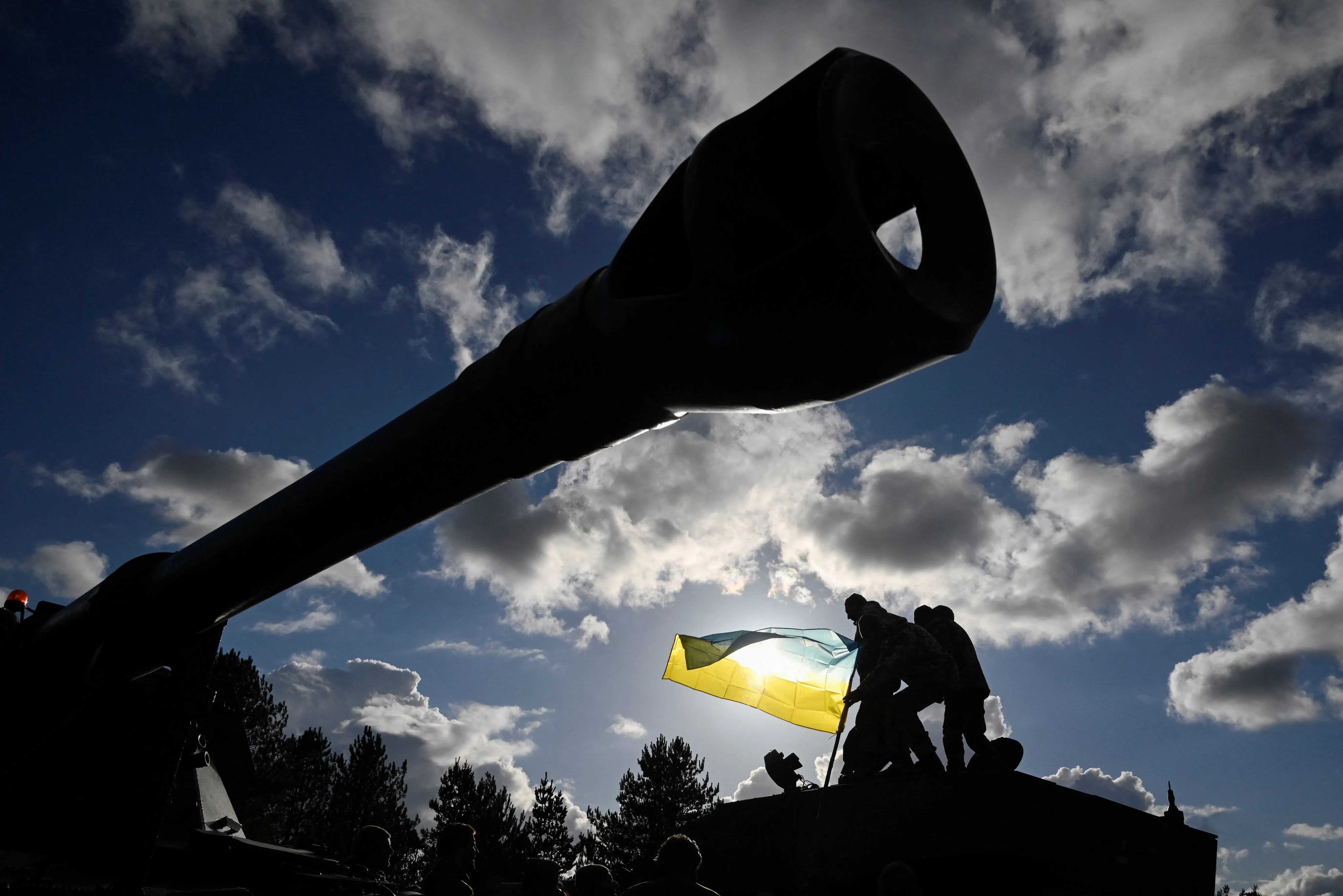
Europe
Strategic wake-up call
Tara Varma
A year into Russia’s full-scale war in Ukraine, Europeans are taking stock — literally and figuratively — of where they stand and where they need to be in a few months’ time.
They have undergone several shocks: First, war, in the form of a massive attack by one state upon another, was back on the continent. Second, Europe had created dependencies, especially on Russian gas and oil, that were endangering its very existence. It needed to become a more sovereign actor.
The first shock was hard to recover from. Despite U.S. and U.K. warnings as early as the fall of 2022 that Russian President Vladimir Putin was intent on invading not only part of Ukraine but the whole country, Western Europeans were mostly skeptical. They did prepare an economic response and threatened Putin with heavy sanctions if he went ahead with his plans. But they were still in shock when his troops entered the country. Past the initial state of paralysis, the European Union acted steadfastly in coordinating with NATO and implementing the first of several sanctions packages meant to seriously damage the Russian economy. Europeans also realized the extent of their dependency on Russian gas and oil and worked to effectively be free of it by the end of 2022. Putin’s aggression provoked a strategic awakening on one of the most sensitive topics in European foreign policy, relations with Russia.
For a long time, Europeans were divided on their approach to Russia: some privileged the economic dimension, some warned of the existential threat Russia posed, and others wanted to integrate Russia into a new European security architecture. When Putin decided to invade Ukraine, he thought he could exploit those divisions once again, as he had in the past. He wasn’t expecting — few were — such a wave of Ukrainian resistance, which in turn won European and U.S. support for Kyiv. Soon, materiel, humanitarian aid, and lethal weapons were flowing to Ukraine, including, unprecedently, through the EU.
The strategic awakening mentioned above took several forms. German Chancellor Olaf Scholz proclaimed a “Zeitenwende” or turning point for Berlin’s foreign policy, but that remains incomplete. France also fought the belief of its Central and Eastern European partners that Paris had been complacent when it came to Russia. These eastern partners took on a much greater role in shaping the debate in European foreign policy. The war proved how the Europeanization of climate, energy, and defense has become critical. On sanctions, the sense of unity was strong. But now that weaponry for Ukraine is the central discussion, and since military spending remains a national member-state prerogative, the risk of comparison and division is emerging again.
The European and trans-Atlantic unity we witnessed is still fragile. There are divisions in the EU about supporting more sanctions packages, with ramifications in national debates. This has been evident in both Bulgaria and Hungary, for example, and debate on the war and its economic consequences was very present in the Italian and French elections in 2022.
European reliance on the United States was also made clear. We need only to see how anxiously Europeans were following the American midterm elections in the fall, as several Republican leaders indicated that if they won control of Congress, they might end U.S. support to Ukraine. European security still very much depends on the United States. The reciprocal is far less true amidst deteriorating U.S. relations with and concern about China.
The future of the European project will be determined by what comes next and by the Europeans’ capacity to respond to major challenges ahead: political, economic, social, and geopolitical.
For Europeans, the outcome of the war carries special weight, as they have now granted EU membership perspectives to both Ukraine and Moldova, which is also the target of Russian destabilization. Hence, the future of the European project will be determined by what comes next and by the Europeans’ capacity to respond to major challenges ahead: political, economic, social, and geopolitical. Responding to these risks will require them to develop European sovereignty when it comes to information, decision, and action: fostering their agency to address the economic and security challenges posed by the interdependence mentioned above, all the while defending the trans-Atlantic partnership and the rules-based order.
The war has shifted the nature of the debate everywhere in Europe: after a 30-year opt-out, Denmark will now be participating in EU defense initiatives; Sweden and Finland have formally sought to join NATO; and many European member states are increasing their defense spending in line with NATO requirements. Estonian Prime Minister Kaja Kallas has suggested that the EU proceed to common procurement of weapons for Ukraine, as it did for vaccines during the COVID-19 pandemic. The EU’s Strategic Compass and NATO’s Strategic Concept, published in March and July 2022, paved the way for a common vision of Europe’s role as a global actor and security provider. This vision now needs implementation, for the sake of Ukraine, Moldova, and Europe.
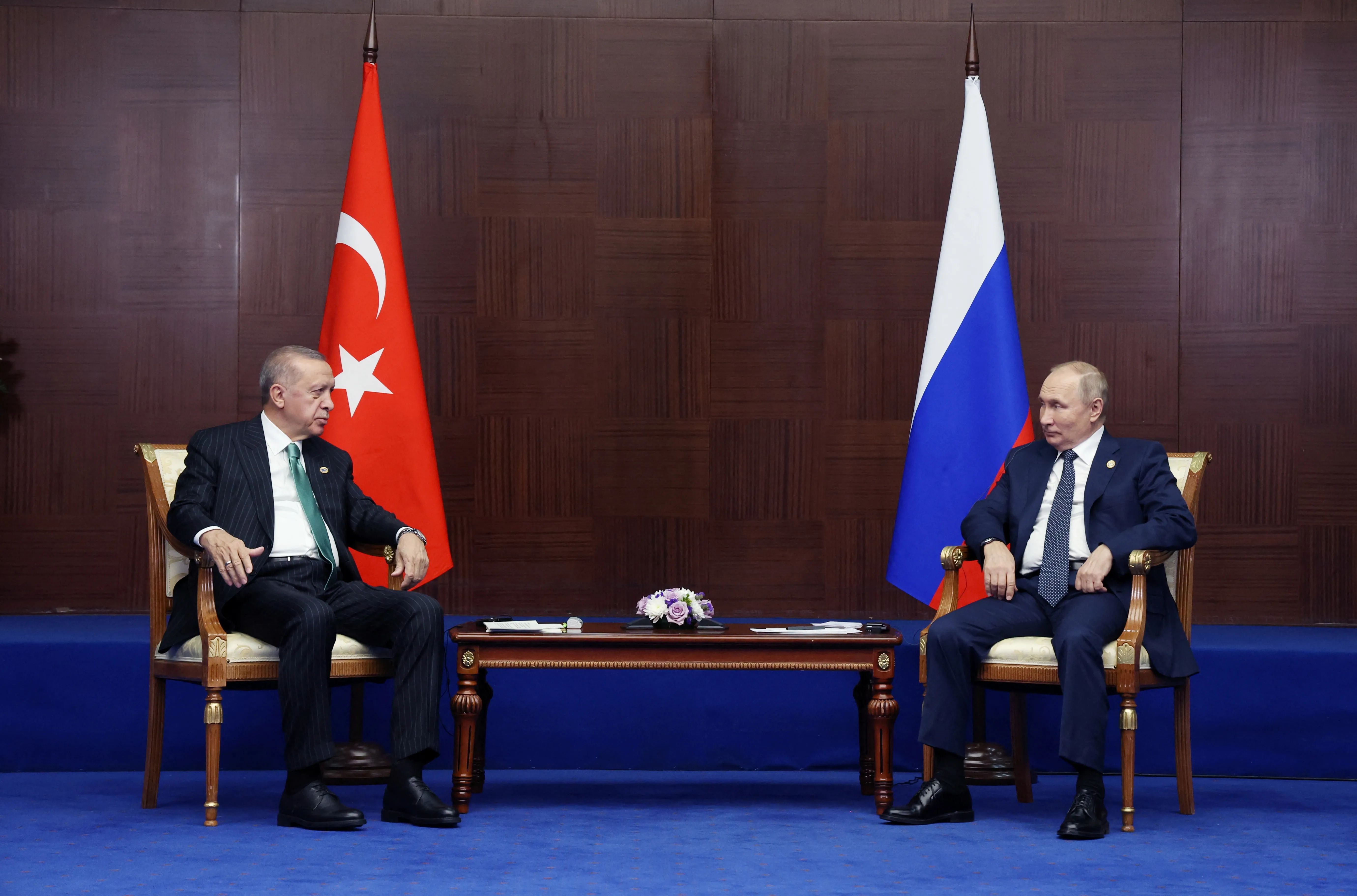
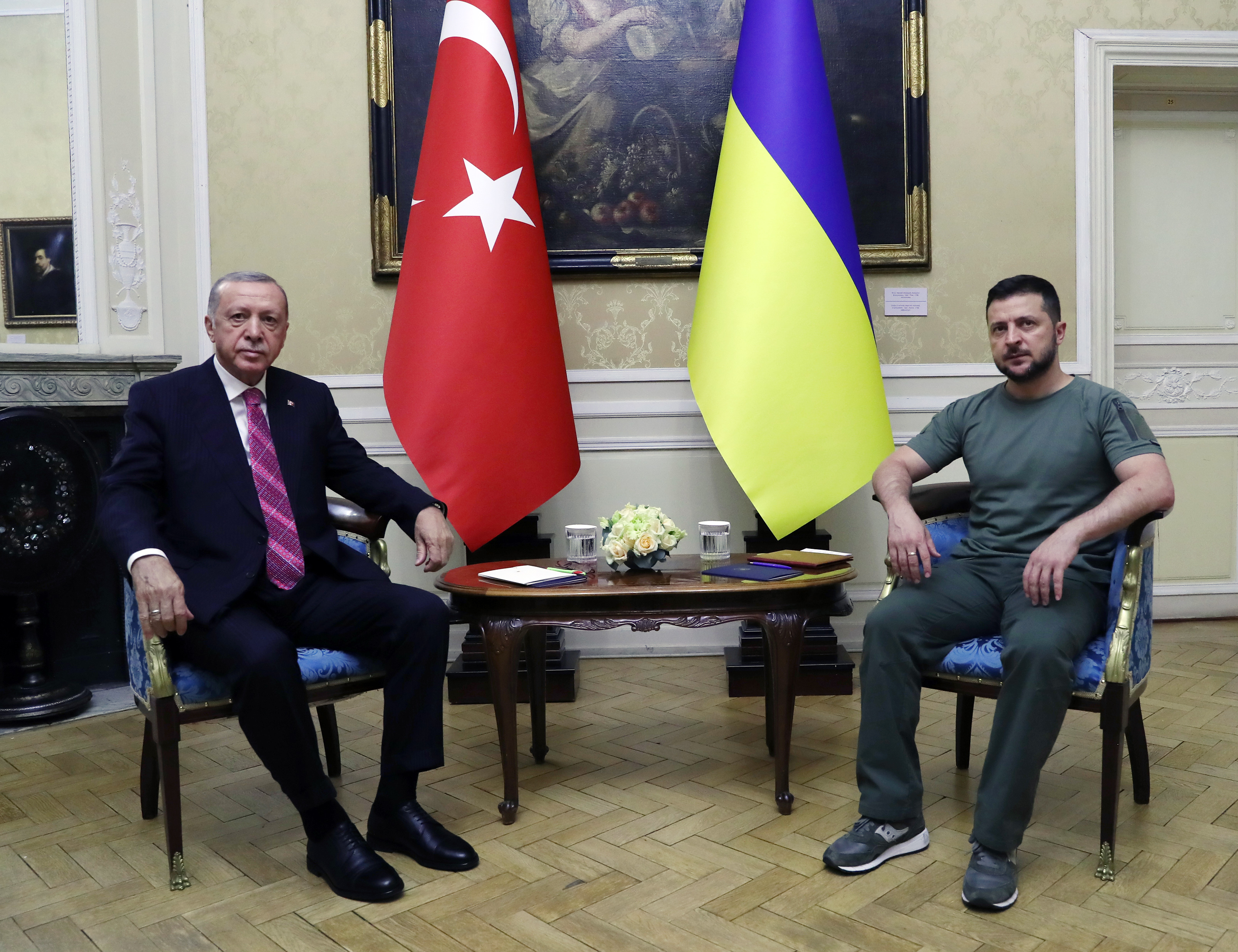
(L): Russia’s President Vladimir Putin and Turkey’s President Tayyip Erdoğan meet on the sidelines of the sixth summit of the Conference on Interaction and Confidence-building Measures in Asia (CICA), in Astana, Kazakhstan, October 13, 2022. Sputnik/Vyacheslav Prokofyev/Pool via Reuters. (R): Ukrainian President Volodymyr Zelenskyy and Turkish President Recep Tayyip Erdoğan hold talks before signing an agreement on rebuilding Ukraine’s damaged infrastructure, in Lviv, Ukraine, August 18, 2022. EYEPRESS News via Reuters.
Turkey
East-West balancer
Aslı Aydıntaşbaş
As the war in Ukraine enters its second year, with waves of soldiers on both sides fighting and dying on the battlefield, Turkey is turning inward. The massive earthquake that hit southern Turkey in early February will have significant political and economic consequences for the country.
For starters, the earthquake disrupts Turkish President Recep Tayyip Erdoğan’s re-election plans and his carefully calibrated balancing act between the West and Russia. Self-confident and eager for a greater role on the world stage, Erdoğan’s Turkey had seen Russia as an economic partner and useful leverage in its relations with the West. While Turkey has been selling drones to Ukraine and has restricted Russian access in the Bosporus and Dardanelles, Ankara has also deepened its economic ties with Moscow and kept a line of communication open with the Kremlin. Erdoğan has been proud of his “balanced” policy and has criticized the robust Western response to Russia’s invasion as “provocative.”
There are both geopolitical and domestic imperatives for Ankara’s desire to protect its relations with Moscow. Over the past few years, Russia has made investments in Turkey’s energy industry and, facing an economic downturn, Erdoğan’s government has been relying on financial flows from Russia — as well as the United Arab Emirates, Qatar, and Saudi Arabia — to muddle through until the Turkish elections. Russian energy giant Rosatom reportedly announced plans last summer to transfer $15 billion to Turkey’s central bank for the construction of the country’s first nuclear reactor; Gazprom also pledged to delay Ankara’s natural gas payments. These steps, coupled with the inflow of Russian tourists and investors, led Russia to emerge as an indispensable partner for the Turkish government ahead of a highly competitive election season.
But that doesn’t mean Ankara’s contribution to Ukraine’s war effort is unimportant. Turkey truly plays both ends of the equation. Early in the war, Turkish drones made a difference on the battlefield and in the defense of Kyiv. Erdoğan has been essential in securing the grain deal that allowed for Ukrainian food supplies to reach world markets. Turkey has also facilitated prisoner swaps and organized two rounds of negotiations between Kyiv and Moscow. If the current stalemate on the battlefield pushes either side toward negotiations later this year, Turkey will once again emerge as an enabler, providing a possible meeting point and important channel to Russian President Vladimir Putin.
Russia continues to be indispensable for Erdoğan, the Turkish economy, and Turkey’s strategic leverage in Syria — and the earthquake will not change that.
But will the earthquake that hit Turkey this month alter that equation? While this might create a desire in Turkey for closer cooperation with Europe and the United States, it is unlikely to change the symbiotic nature of the Turkish government’s relationship with Russia — sealed at the top by the chemistry between Putin and Erdoğan. Russia continues to be indispensable for Erdoğan, the Turkish economy, and Turkey’s strategic leverage in Syria — and the earthquake will not change that.
However, earthquake diplomacy can create a better atmosphere in Ankara’s relations with Washington. Turkey’s estranged neighbors like Greece and Armenia, as well as its NATO allies, were quick to come to its aid in the early phase of search and rescue operations — invalidating the government’s consistent domestic narrative that the West is not Turkey’s friend and even has ambitions to destabilize it. Days before the devastating earthquake, Turkey’s interior minister had accused Washington of organizing terrorist acts in Turkey and called on the U.S. ambassador to “take [his] dirty hands off of Turkey.” Today, European nations and the United States are already making plans to provide reconstruction aid to Turkey’s devastated southern region.
This catastrophic natural disaster could usher in a new honeymoon between Turkey and the West. Ankara will need reconstruction funds for years to come and support from NATO allies and multinational organizations will be essential. Rekindling ties with the trans-Atlantic community may lead Erdoğan’s government to moderate its tone toward NATO allies and even greenlight Sweden and Finland’s NATO accession.
But even if Turkey tilts a little toward the West, it will not become another Poland overnight. The Turkish public and its leadership are united in an intuitive desire for neutrality in the Russia-Ukraine War. Whether under Erdoğan or a future leader, Turkey will be cautious about antagonizing Russia.
As long as the war in Ukraine continues, with no clear winner, Ankara will, for good or bad, stick to its balancing act between the West and Russia.
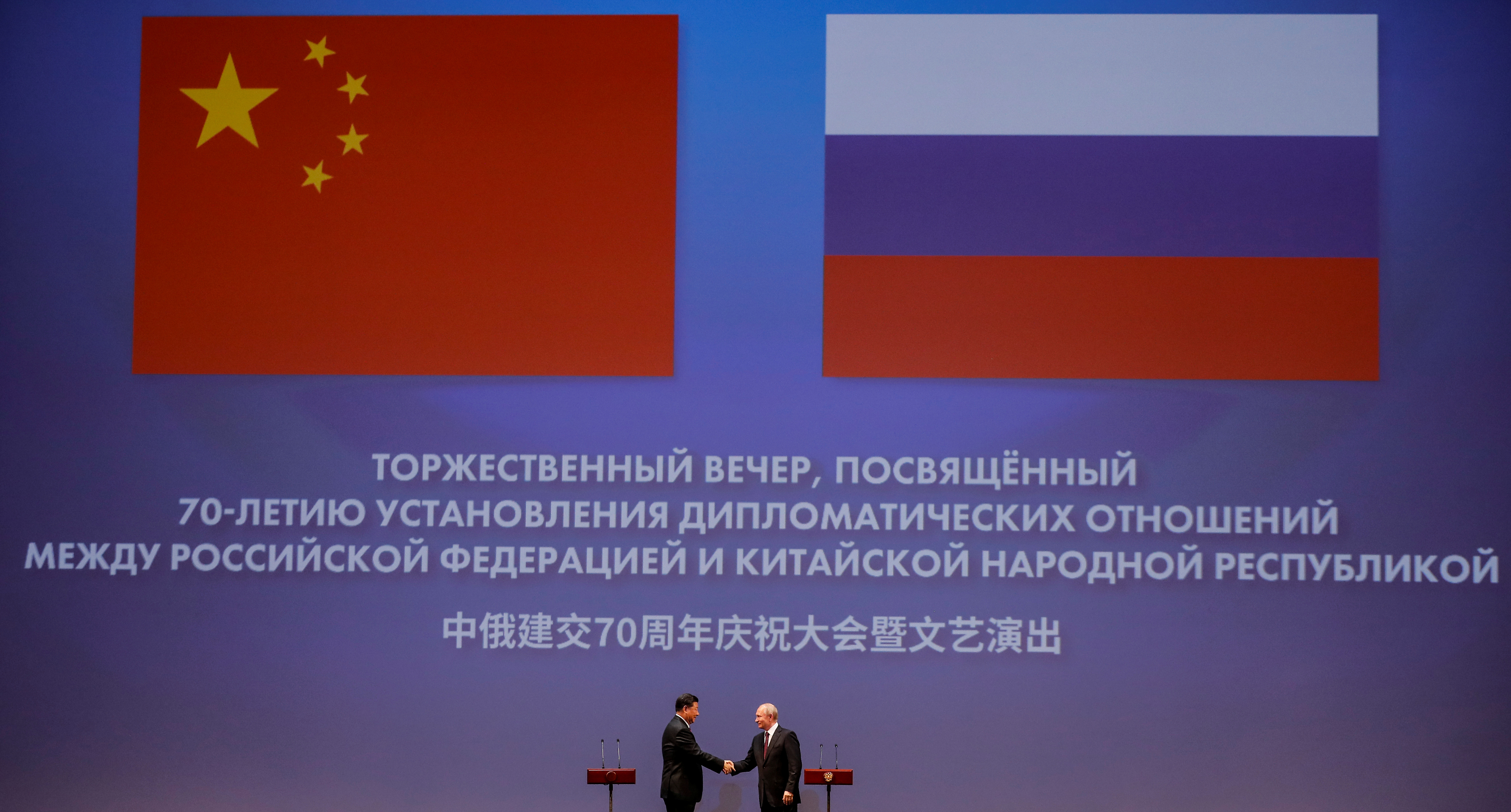
China
A strategic alliance with risks
Patricia M. Kim
The last 12 months since Russia’s invasion of Ukraine have revealed three striking aspects of China and Russia’s strategic alignment, including the depth of their ties, the limits of their partnership, and the prospects for China to serve as a moderating force to Russia’s violent revisionism.
Since declaring a “no limits” partnership with Moscow in February of last year, Beijing has doubled down on its alignment with Moscow, despite the steep costs to its global reputation and strategic interests, particularly around Taiwan. While claiming to be a neutral party to the conflict and to respect the territorial integrity and sovereignty of all states, Beijing has refused to explicitly condemn Russian President Vladimir Putin’s brutal aggression in Ukraine and expressed sympathy for Moscow’s “legitimate security concerns.”
China-Russia ties have been maintained, if not strengthened, across the diplomatic, economic, and military domains in recent months. High-ranking Chinese officials and their Russian counterparts, including Chinese President Xi Jinping and Putin, have met consistently both in person and virtually. China-Russia trade has boomed, breaking previous records to reach more than $190 billion last year. Quite strikingly, Beijing has also continued its joint military exercises with Moscow. These include bilateral naval exercises in Northeast Asia last spring as U.S. President Joe Biden visited the region and again this past December. This year, China and Russia held their first military exercise together with South Africa off the latter’s coast, which coincided with the anniversary of the invasion of Ukraine.
The last year has made clear that China and Russia’s strategic alignment is not simply a marriage of convenience, but a deep partnership that is likely to endure for the foreseeable future.
The last year has made clear that China and Russia’s strategic alignment is not simply a marriage of convenience, but a deep partnership that is likely to endure for the foreseeable future. To be sure, Beijing’s embrace of Moscow is motivated in part by a hardheaded calculation of the need to stabilize relations with its former rival and militarily formidable neighbor as China braces for long-term competition with the United States. But beyond realpolitik concerns, at the core of Beijing and Moscow’s 21st-century partnership is a shared aim of challenging what these two states perceive to be a Western-dominated global order that enables the United States and its allies to impose their standards, values, and interests on others thanks to international institutions that were created by and continue to favor Western powers.
Although China and Russia seek to jointly challenge the existing global order, the two do not always see eye to eye on the means to achieving these shared objectives given their different material circumstances. China, as the world’s second-largest economy, stands to lose much more than Russia from global instability and economic isolation. Chinese leaders have therefore called for a cease-fire in Ukraine and expressed opposition to the threat or use of nuclear weapons in the conflict. While there are recent reports of Chinese companies selling dual-use items such as commercial drones to Russian entities, Beijing has refrained thus far from providing Putin with direct military assistance. The Biden administration has recently revealed that China may be on the cusp of supplying Russia with lethal weapons, however, and has strongly warned Beijing not to take such steps. According to a breaking report, the Russian military is in negotiations with a Chinese drone manufacturer to mass produce so-called “kamikaze” drones. Whether Beijing allows this or other weapons transactions to move forward with increased global scrutiny remains to be seen. At present, it seems unlikely that China will lean into the conflict to militarily support Moscow to the degree that the United States and its partners have assisted Kyiv.
Barring an extreme situation, such as the use of weapons of mass destruction by Russian forces, Beijing is also unlikely to join in on Western sanctions against Russia or to embrace other measures that may endanger its ties with Moscow. China has a strong self-interest in a stable global environment as it seeks sustained economic growth and prosperity for its people. Consequently, Washington and its allies should continue to lean on Chinese leaders to, at a minimum, refrain from assisting Moscow’s war efforts, and to constructively use their influence to reduce escalatory risks as the war rages on in Europe. Recent diplomatic efforts by Biden, German Chancellor Olaf Scholz, and others to press Xi to oppose Putin’s nuclear saber-rattling were critical for sending the right signal to Russia. Similar efforts should be made to ensure China cooperates in advocating for a peace agreement that does right by Ukraine, once such a roadmap emerges.
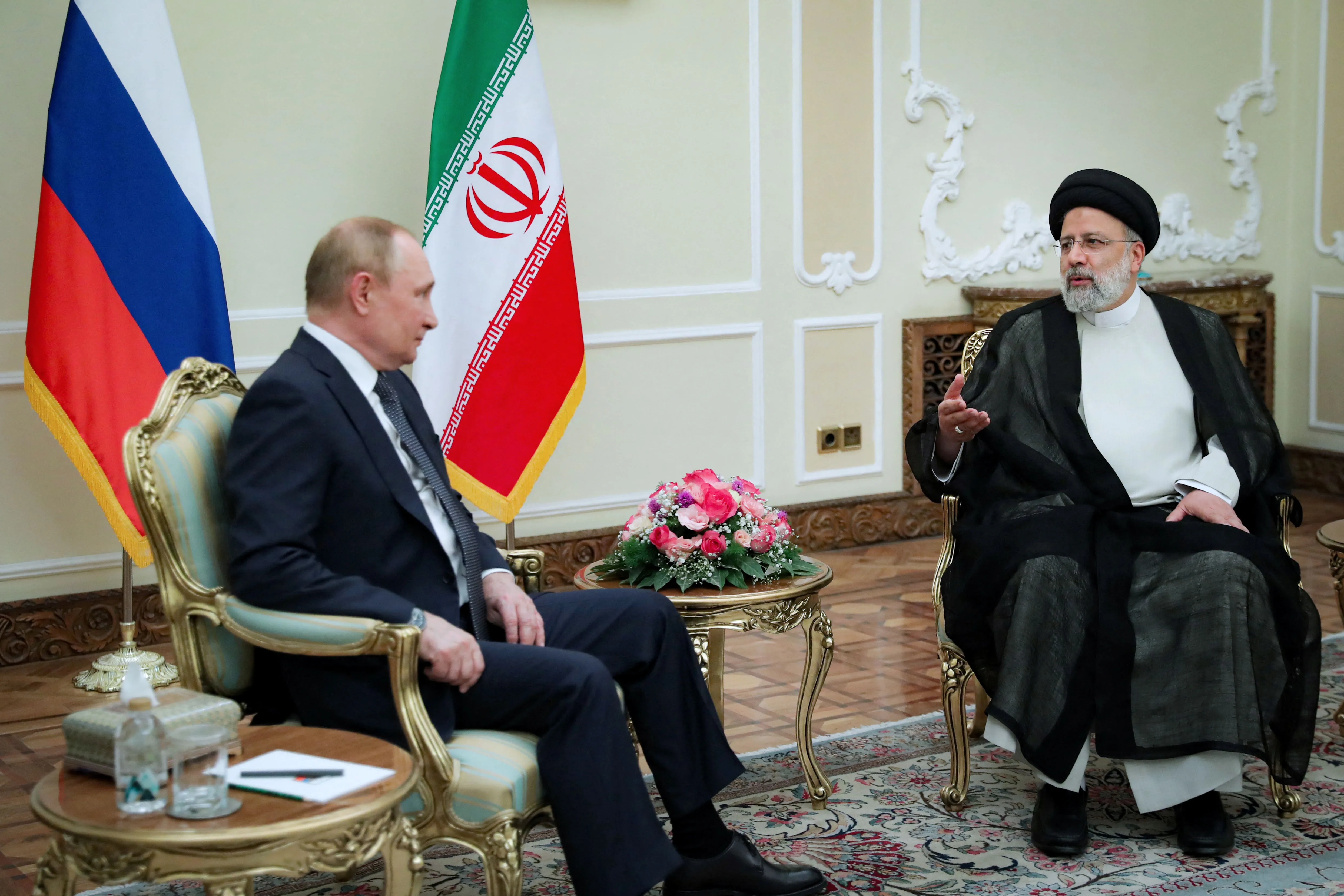
Iran
Turn toward Moscow
Suzanne Maloney
In the first year of Russia’s war in Ukraine, Iran has emerged as an unlikely wild card — the only state in the world that is providing offensive weaponry to Moscow to bolster its brutal military campaign. Tehran’s unusual gambit to insert itself into a war in the heart of Europe reflects a decisive shift in its geopolitical orientation and risk tolerance. The conflict in Ukraine has supercharged a strategic partnership between Iran and Russia that began nearly eight years ago in Syria, accelerating Iran’s embrace of authoritarian alternatives to the West and dooming any prospects for the Biden administration’s dogged efforts to resuscitate the 2015 Iran nuclear deal, the Joint Comprehensive Plan of Action.
Some observers have described the Tehran-Moscow relationship as an “alliance of convenience,” a case of short-term opportunism by a beleaguered regime. After all, Iranians know something about wars of aggression, having endured their own catastrophic conflict with a neighbor, the eight-year “imposed war” precipitated by Saddam Hussein’s 1980 invasion. And the legacy of Russian territorial acquisitiveness still looms large in Iran, which ceded the southern Caucasus to imperial Russia in the 19th century and outmaneuvered Soviet attempts to install proxies in northwest Iran after World War II. While their more recent engagement in Syria has been mutually beneficial, Tehran has always been clear-eyed about the divergence in Russian and Iranian interests there.
And yet this inauspicious legacy has not inhibited Iran’s support for the Russian war effort. As the conflict approached its six-month mark, Iranian unmanned aerial vehicles began striking Ukraine’s critical infrastructure. Reports suggest that Tehran is helping to train Russian soldiers and transfer drone production systems to Russia, and ballistic missile exports to Moscow may be next. In return, Moscow has promised fighter jets, helicopters, and newer air defense systems. Even so-called pragmatic political figures in Iran endorse the Russian narrative that its war is purely defensive. As a result, the cagey cooperation established between their militaries in Syria has now blossomed into “a full-fledged defense partnership” according to the Biden administration — one that provides significant military value to both regimes. Iran’s intervention can’t turn the tide of the war in Moscow’s favor, but Iranian drones can impose significant financial costs on Ukraine and terrorize its citizens.
The reciprocal military cooperation reflects only one dimension of the deepening strategic partnership between the two countries. Beyond the battlefield, Tehran and Moscow have exchanged a series of high-level visits and significantly upgraded military, economic, and energy cooperation. The fruits of this new partnership include a mostly speculative commitment of a $40 billion Russian investment in Iran’s oil and gas development and sanctions-proof trade corridors and financial mechanisms.
Today, Iranian leaders are persuaded that their country’s fortunes lie in China and Russia.
The multifaceted relationship between Tehran and Moscow belies any sanguine assertion of opportunism. Rather, Iranian leaders are pursuing longstanding pledges to pivot east. Iran’s leaders have long anticipated — and exulted in — the decline of U.S. influence on the world stage. That forecast has increasingly been supplemented by a recognition of the shift in the locus of economic, diplomatic, and military power to Asia. While Beijing has not delivered on its epic 2021 $400 billion economic pact with Tehran, its imports of Iranian crude oil in defiance of U.S. sanctions have proven an essential lifeline for sustaining Iran’s economy and its ruling system. With Tehran’s accession to the Shanghai Cooperation Organization last year, the influential Iranian newspaper Kayhan celebrated this newfound convergence among “the three great powers” — Russia, China, and Iran.
Tehran’s embrace of Russia and China also reflects its assessment that the West is no longer a desirable or reliable conduit for economic or diplomatic opportunities. Russia’s invasion of Ukraine coincided with hard-fought progress toward resuscitating the nuclear deal with Iran. A decade ago, access to Western finance was a central imperative in persuading Tehran to negotiate over its nuclear program, but today, Iranian leaders are persuaded that their country’s fortunes lie in China and Russia. That calculation suits Russian interests neatly; whatever benefits Moscow might once have perceived in constraining Iran’s nuclear advances have been displaced by the exigencies of the war in Ukraine. As a result, Washington now must be prepared to balance a brewing crisis over Iran’s proximity to nuclear breakout even as it contends with the monumental Russia and China challenges.
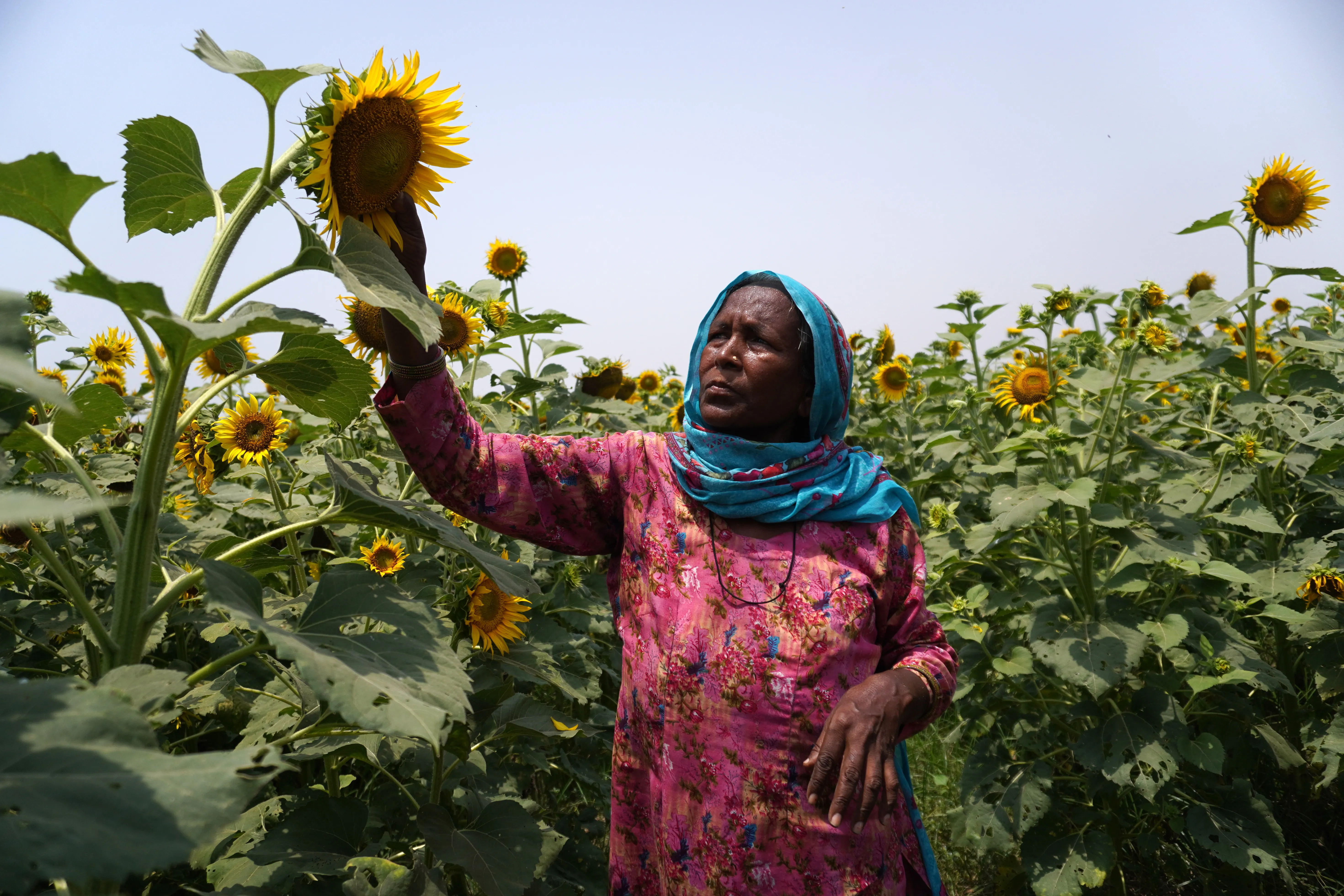
Global South
It’s complicated
Tanvi Madan
Since Russia’s invasion of Ukraine, the “Global South” — encompassing a diverse range of countries in Africa, Asia, Latin America, and the Pacific — has been seen as “sitting on the fence.” Yet in vote after vote in the UN General Assembly, most of the developing world has criticized Moscow’s actions. The abstentions — particularly India’s in the U.N. Security Council — received greater attention, but even the abstainers list is striking since it includes several traditional Russian partners who declined to support Moscow’s actions despite Russian lobbying. Bhutan’s permanent representative identified the reason, “for small states [the UN principles] serve as the guarantor of our existence … We cannot condone the unilateral redrawing of international borders.” The Kenyan representative asserted that security concerns did not justify “breach[ing]” Ukraine’s territorial integrity or legitimizing “irredentism and expansionism.”
Yet the Kenyan representative also exposed a North-South fault line. He suggested that the powerful — and not just Russian President Vladimir Putin — operated on the basis of one rule for me, but not for thee. Other officials have noted that the West expects the Global South to care about European security but doesn’t reciprocate. More broadly, there is worry that the war — which unleashed intensified inflationary pressures, debt sustainability doubts, and food and energy insecurity as a result of higher grain, fuel, and fertilizer prices — has worsened developing countries’ economic challenges, which COVID had already exacerbated. And they question whether the West will now meet its commitments to help address their development, health security, and climate change-related challenges. In addition, defense trade partners of Russia and Ukraine are facing military supply disruptions.
The response and impact in the Global South have varied. India, for instance, has been more reluctant to criticize Russia by name, but it shares several of these concerns — one reason it seeks to play a bridging role between North and South and East and West. Moreover, the war is making India’s largest military supplier (Russia) more dependent on India’s primary adversary (China). New Delhi is also concerned about China filling the vacuum left in the developing world by a distracted Russia, and how the war has complicated its ties with crucial partners in North America, Europe, and Asia — and might reduce their attention on the Indo-Pacific.
Given these concerns, it should not be surprising that the developing world wants to see the Russia-Ukraine War end.
Developing countries have see the West condemning them for what the United States and Europe often do — protecting their own interests.
Yet many Western observers seem taken aback by the Global South’s reaction. That perhaps reflects that developing countries are overlooked when Washington or Brussels do not perceive them as relevant to their dominant strategic frameworks. Now that developing countries’ views are coming into focus, they find themselves being criticized for not isolating Moscow. Instead of acknowledging their comments in support of the international order, they see the West condemning them for what the United States and Europe often do — protecting their own interests.
This is counterproductive for the West. Rather, it could heed the lessons from President Dwight Eisenhower’s second-term engagement with non-aligned countries: (1) learn to tolerate differences, and (2) honey works better than vinegar. Moreover, instead of taking a with-us-or-against-us attitude or talking about weakening Russia, a more effective approach would keep the focus on Moscow’s violation of Ukraine’s territorial integrity and the need for it to end the war (and thus alleviate the developing world’s pain). Outreach from Russia’s neighbors — e.g., Central and Eastern European countries that don’t have imperial baggage or had pre-1991 ties with the Global South — might resonate more than from major powers who are seen as selectively citing the rules-based order. They can also highlight the imperial nature of Putin’s project, using his own words — not least to counter Moscow’s attempt to portray itself as anti-imperialist and Russia and China’s messaging that NATO, not Russia, is responsible for this war. The United States and its European allies should also more proactively highlight that it is primarily Putin’s war of choice rather than Western sanctions that is causing developing countries’ pain — most countries don’t realize that food, fuel, and fertilizer are largely not sanctioned.
The West has made some efforts along these lines. This has been evident in the Biden administration’s outreach to Africa, and Berlin’s acknowledgment of the need to demonstrate concern about developments beyond the West.
Most significantly, however, the West needs to be visibly responsive in alleviating the pain being felt beyond its borders and addressing these countries’ development concerns — especially vis-à-vis food, energy, health, and climate security. This cannot be a one-time effort. It needs to involve consistent outreach that recognizes the variation in the Global South and these countries’ agency, and tailors engagement accordingly. This will not be easy given bandwidth and other constraints, but it is a necessary task on which Western countries should collaborate with each other and with like-minded partners in the “Global South” as well.
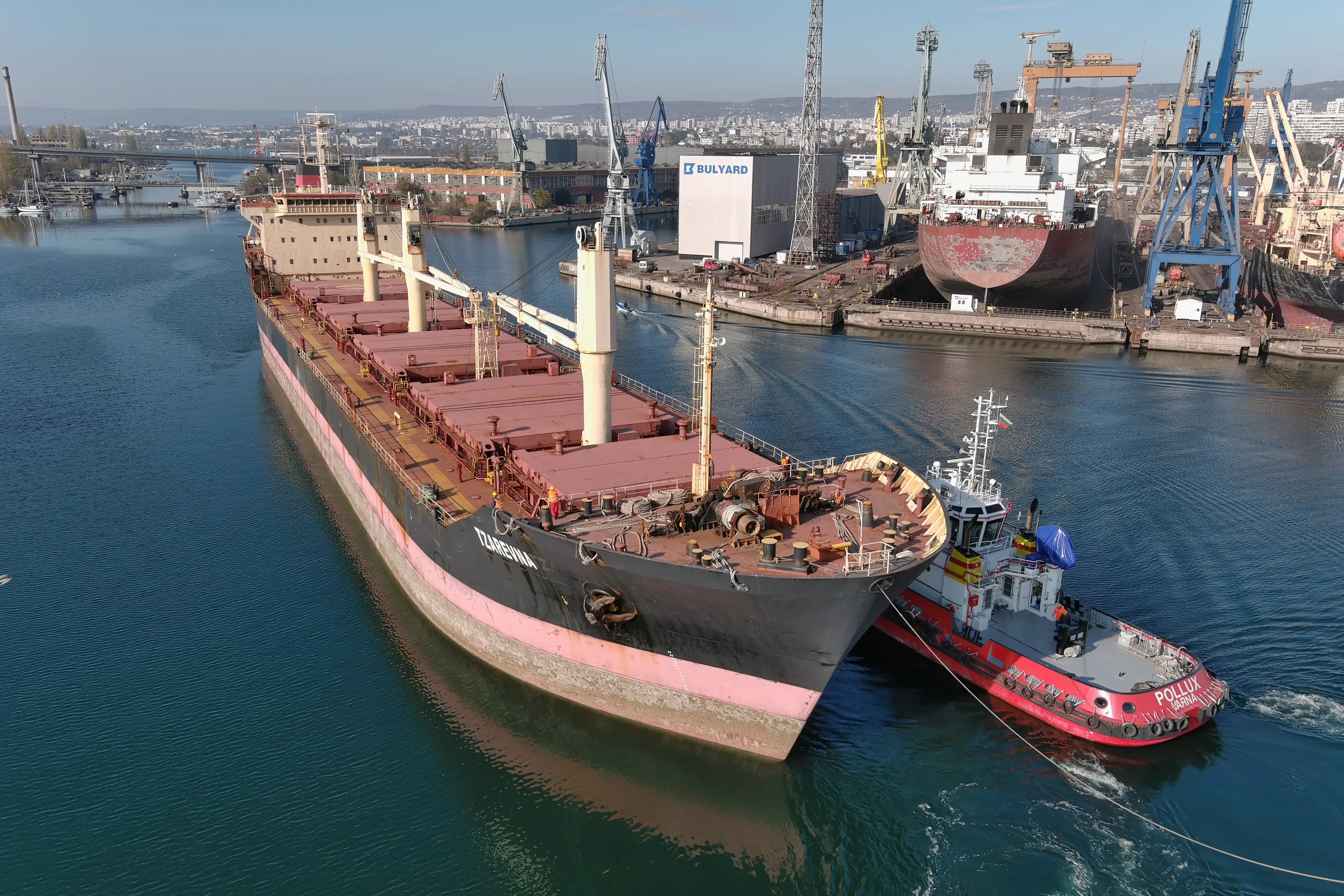
International order
This will be hard (and could get worse)
Bruce Jones
Russia’s re-invasion of Ukraine does not yet rank among the deadliest wars of the post-Cold War period, but it is surely the most dangerous — with nuclear-armed Russia invading a sovereign country that borders NATO members, signaling wider ambitions, and threatening nuclear escalation. The West has reacted accordingly, pouring weaponry and money into the fight, as well as imposing sanctions on Russia — while staying open to (credible) diplomacy.
A year in, we can take stock of the wider consequences. Politically speaking, Ukraine’s courage and the West’s response have helped stem the leaching of influence away from the democratic powers. China was stunned by the sophistication of America’s operational intelligence in advance of Russia’s invasion, giving Beijing pause for thought in its own regional ambitions. Russia itself is weakened (though not hobbled), and its partnership with China is revealed to have sharp limits. The diplomacy surrounding the war, though, also revealed that the non-Western middle powers (including democracies) have limited stakes in an order whose “rules” do little to help them through crises, and much to frustrate their growth. As guardians at the gate, the United States and the European powers are the objects of much resentment for keeping the southern powers from a seat at the table at the key institutions that shape the economic order — to say nothing about the deep anger at the West’s nationalist and recalcitrant responses in the first phase of the COVID-19 crisis and vaccine distribution. An order that fails to attract rising adherents is at risk.
We must retool our security concepts around the fact of sustained tension and the economic architecture around the need for less dependence on distrusted partners.
The war is also chipping away at the remaining delusions about operating a global system built, over 40 years, on the premise of stable great power relations. We are beginning to understand that we must retool our security concepts around the fact of sustained tension and the economic architecture around the need for less dependence on distrusted partners. The reality we still shy away from is: this is going to be extremely costly and dangerous.
But the alternatives are likely worse. Among them: a naval crisis in the western Pacific that badly disrupts global trade. Despite “teaching moments” in the Suez Canal and Long Beach, we are still sea-blind: our imaginations do not encompass how dependent every major economy (including America’s) is on the flow of goods — industrial, agricultural, energy — by sea. Despite the sophistication of U.S. intelligence on Ukraine, we were caught flat-footed when naval conflict in the Black Sea roiled global food markets, risking famine for tens of millions. A similar, sustained interruption of trade flows through the East and South China Seas would cause a global economic crisis and kneecap the American economy — as well as China’s. Yet scenario exercises around a Taiwan crisis often underestimate the effect of interrupting shipping. Integrating the reality of sea-borne globalization into our strategic planning is vital.
There’s another cost: to our bandwidth for other crises. In Haiti, Yemen, the Sahel, and the Horn of Africa, violence, lawlessness, or famine rises while the West’s attention, deployments, and resources dwindle — to say nothing of the disaster left behind in Afghanistan. The United States and Europe may rise to the occasion in response to the devastating earthquake in Turkey and Syria, but their central role in managing global crises is diminishing.
And then there are the hazards. The conflict in Ukraine is not yet a direct war between the nuclear powers, but it is the most important of several recent instances that have seen the armed personnel of one nuclear power killed by partners of another. In the absence of robust deterrence beyond allied territory and determined to resist new “spheres of influence,” the West is drawn into these indirect but substantial fights over non-allied territory. Escalation dynamics are running ahead of either real deterrent capacity or diplomatic guardrails. A sense of being in the wars before the war is mounting.
This leaves us in urgent need of invigorating our defenses for a geopolitical contest that no longer seems likely to remain “short of war.” And with the long, hard graft of re-globalizing to decrease the role of China in vulnerable supply chains. Except in niche technologies, the wrong approach to that is expensive friend-shoring; the right approach is adapting our investments and trade rules to better support productive growth in emerging economies.
All of this lies ahead of us even if Russia fails to win — which, in parallel, we must work with Ukraine to guarantee.
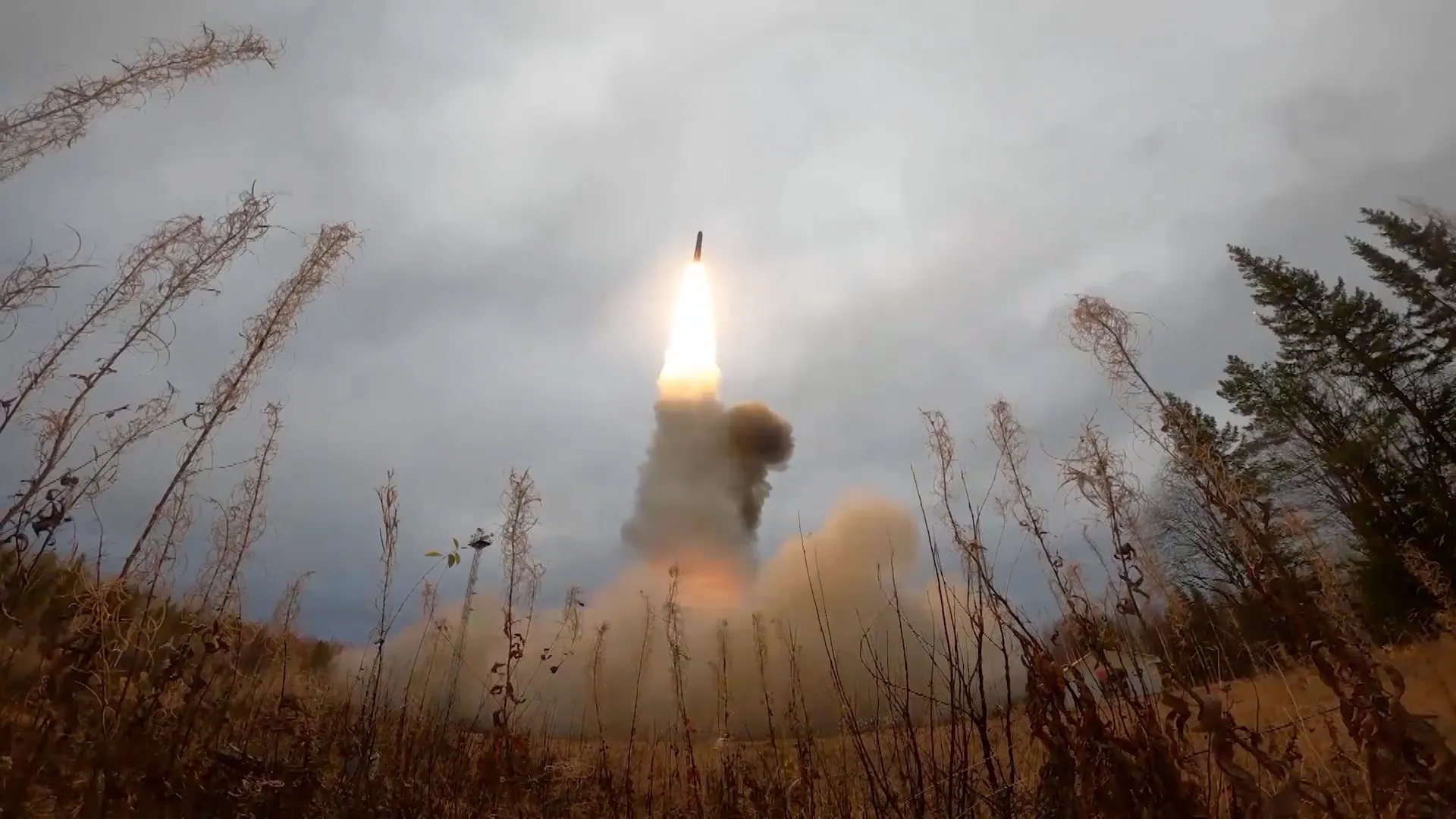
Nuclear deterrence
We will all go together when we go
Caitlin Talmadge
As Russian President Vladimir Putin’s February 2022 speech announcing the invasion of Ukraine reminded the world, “Russia remains one of the most powerful nuclear states,” and fears of Russian nuclear use have persisted with varying intensity throughout the conflict. Neither the conventional war nor the prolonged nuclear crisis it has sparked appears likely to end any time soon, so modesty is warranted in drawing any grand conclusions. Yet given that data on nuclear crises are (thankfully) rare, the past year offers an unusual opportunity to reflect on the emerging contours of strategic deterrence in an era of resurgent competition. Three lessons stand out.
The Russia-Ukraine War has reinforced how important nuclear weapons are because, by their very existence, they dramatically raise the potential costs of escalation.
First, nuclear weapons still cast a long shadow on world politics. They have not been fired in anger since 1945, but that doesn’t mean that they’ve gone away. The Russia-Ukraine War has reinforced how important they are because, by their very existence, they dramatically raise the potential costs of escalation. Putin has leveraged this fact, repeatedly reminding the world of his country’s arsenal in an effort to dissuade other countries from intervening on Ukraine’s behalf. His nuclear threats have not succeeded in stopping outside aid, but they have induced significant restraint in the extent, nature, and pace of that support. Western military assistance, while vigorous, has been piecemeal, careful, and cautious due to fears of escalation. Absent Russian nuclear weapons, the escalation discussion would sound very different, and the West would worry much less about the dangers of a decisive Russian defeat. Instead, it faces a situation in which it has to balance a desire to support Ukraine against the need to avoid World War III if Putin’s conventional campaign implodes. Of course, Putin has to worry about U.S. nuclear weapons too, which is a major reason that he has avoided attacking NATO supply lines.
Second, nuclear weapons deter invasion — and states without the protection of such weapons are more vulnerable to attack. Even though nuclear weapons have not been employed in this war, the fact that the war occurred at all surely reminds states of the inescapable value of nuclear deterrence in protecting the homeland. No one wants to be the next Ukraine. Ukraine had neither its own nuclear weapons nor an extended deterrence guarantee from a nuclear patron. Facing a nuclear-armed Ukraine, or a Ukraine under NATO’s nuclear umbrella, Russia would have had to worry that a large-scale invasion might prompt a nuclear response. Instead, Russia gambled on invasion, knowing that doing so would never put its own cities at risk. Watching this unfold, Japan, South Korea, Taiwan, and others (perhaps Iran and Saudi Arabia) have all undoubtedly been taking notes. They are likely to infer the renewed importance of acquiring their own nuclear weapons, pursuing nuclear sharing, or obtaining stronger security guarantees from a nuclear power. This is not good news for the global non-proliferation regime.
Third, arms control is a vital tool in a world of nuclear danger. As scary as the nuclear dimensions of the war have been, some of the guardrails in the U.S.-Russian relationship held during the first year of the war, most notably the New START Treaty. Though on life support, this strategic arms control framework still managed to provide some assurances to each side about the other’s nuclear arsenal at a time of intense distrust. It also enabled the two sides to continue communicating about routine peacetime nuclear activities such as missile tests, reducing the chance that a test might be mistaken for a launch against the backdrop of hostilities. Just as important have been the less formal methods of risk reduction between the two sides, such as maintaining military-to-military communications to avoid miscalculations. The war thus reinforces the role of dialogue as a tool for managing escalation — a mutual interest shared by even the most bitter enemies. Of course, Putin’s recent announcement that Russia is suspending its participation in the treaty raises deep concerns about the future; it will be important to discern whether Putin intends to evade the treaty’s force limits or simply to halt inspections permanently. Either way, the episode also reminds us that the United States and China lack an arms control framework for managing their interactions akin to what the United States and Russia have had over the past year. Were conflict to break out over Taiwan, for example, even the minimal guardrails that have been present in the current war would be absent.
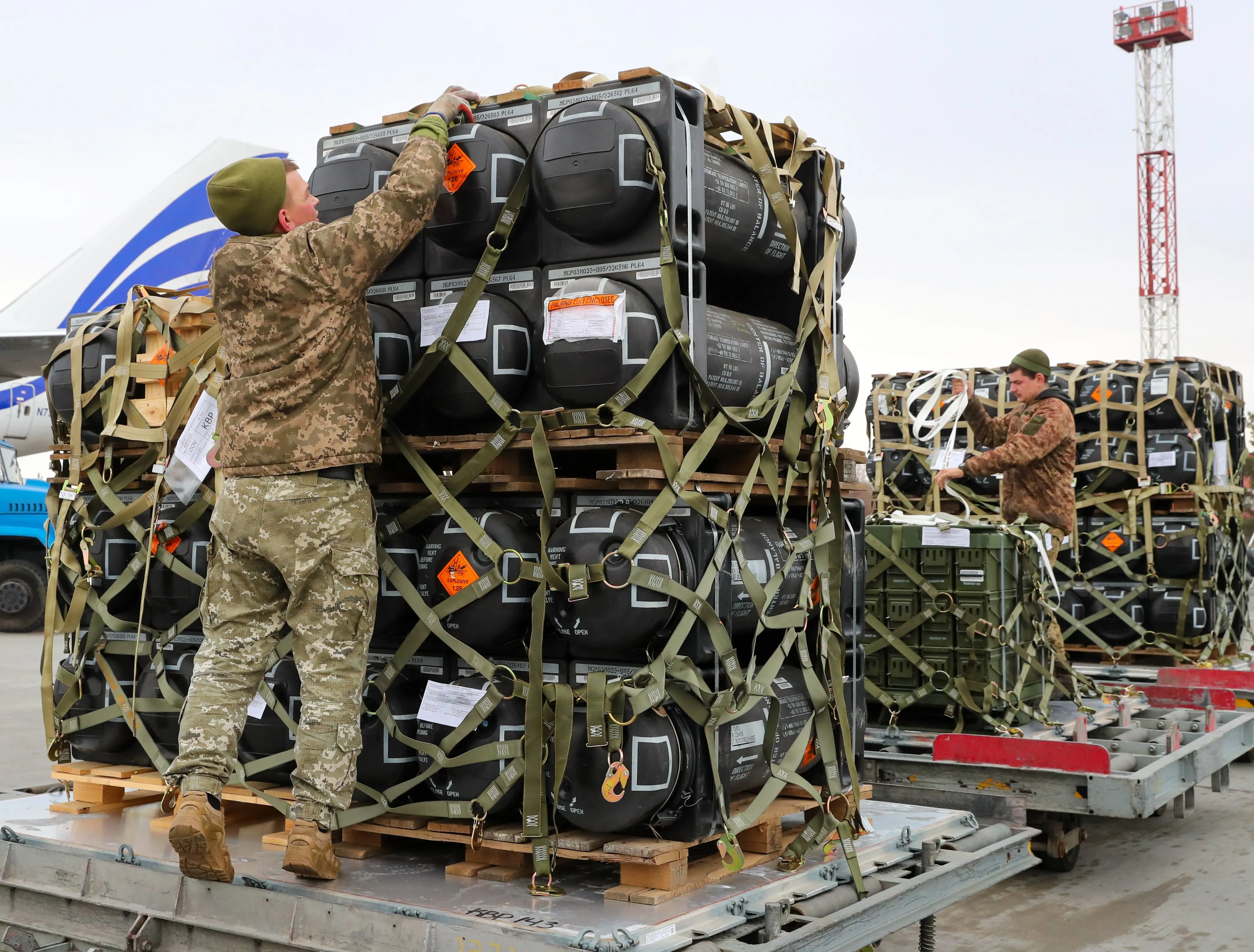
Future of warfare
Plan for the end of the war, or be sorry
Melanie W. Sisson
There has been intense interest over the past year in extracting lessons from the allied West’s attempt to forestall Russian President Vladimir Putin’s appalling aggression in Ukraine, and from the war that has followed. There is examination of whether and how the West could have done more and better to deter Putin from acting on his ego and id, on whether and how modern technologies — drones, precision munitions, and cyber operations — are affecting the course of this war and what they mean for the future of warfare, and on whether and how this conflict will affect the likelihood of others after it, most especially in the contested Taiwan Strait.
All of these very pragmatic areas of inquiry deserve the attention they are getting. So too, however, should the war in Ukraine reinforce the fact — not the idea, but the fact — that war is inherently unpredictable. It should be sobering not just that Putin’s predictions were so very wrong, but that so too were those of the West — despite the most modern and sophisticated intelligence organizations in the world, despite the collective expertise of scholars and analysts who have devoted their careers to studying Putin and warfare, and despite the observable, ongoing consequences of the West’s own poor predictions in Iraq and Afghanistan.
NATO similarly has surprised itself with the extent of its willingness to arm Ukrainian fighters. Hard lines drawn in February 2022 for fear of escalation have softened over the course of the conflict. Now, one year in, the unthinkable has become the doable with the promised delivery to Ukraine of German Leopard and U.S. M1 Abrams tanks. Policymakers explain this evolution as a responsiveness to conditions on the ground, to the wisdom of pressing advantages as they arise. When viewed through the unsentimental lens of history, however, this progression usually is called mission creep, the pejorative term used to describe an incrementalism that either makes wars longer and bloodier or that puts the conflict on a path toward expansion and escalation.
It should be sobering not just that Putin’s predictions were so very wrong, but that so too were those of the West.
The likelihood of mission creep correlates with the extent to which policymakers enter their nation into war — as a direct combatant or as a material supporter thereof — without a clear concept of the peace they are seeking to achieve, or with only idealized visions of how that peace will come about. The latter characterizes the U.S. wars in Iraq and Afghanistan, which succeeded in the breaking but failed in the building, and there is reason to be concerned that the former characterizes the alliance’s engagement in Ukraine today.
Economically, it is unclear for how long or until what point the alliance intends to use sanctions, export controls, financial restrictions, and other measures to punish Russia. Militarily, the White House is taking great care not to assert that the goal is either Ukrainian victory or Russian defeat, much less to describe what either of those terms would mean in practice. Instead, it is declaring an intent to ensure that Ukraine is in the “strongest possible position” to defend itself on the battlefield so that it can be “in the best possible position at the negotiating table” when that time comes. This framing makes it difficult not to worry that policymakers will be tempted to use Ukrainian battle victories as predictors of future success, as indicators of irreversible progress toward having that strong hand at the negotiating table, and therefore as justification for continuing to redraw the lines of what military armaments are, and are not, out of bounds.
Allowing events to alleviate the pressure on policymakers to make hard decisions about goals and objectives and to reduce NATO vigilance about escalation can have dangerous effects in a war with a cynical, sadistic, nuclear-armed adversary. Perhaps the most unpleasant of all lessons to be learned from the first year of this terrible war, then, is that strategies led by predictions about how the fighting will go rather than by a vision of how it should end run the risk of failing either very slowly, or in very dangerous ways.
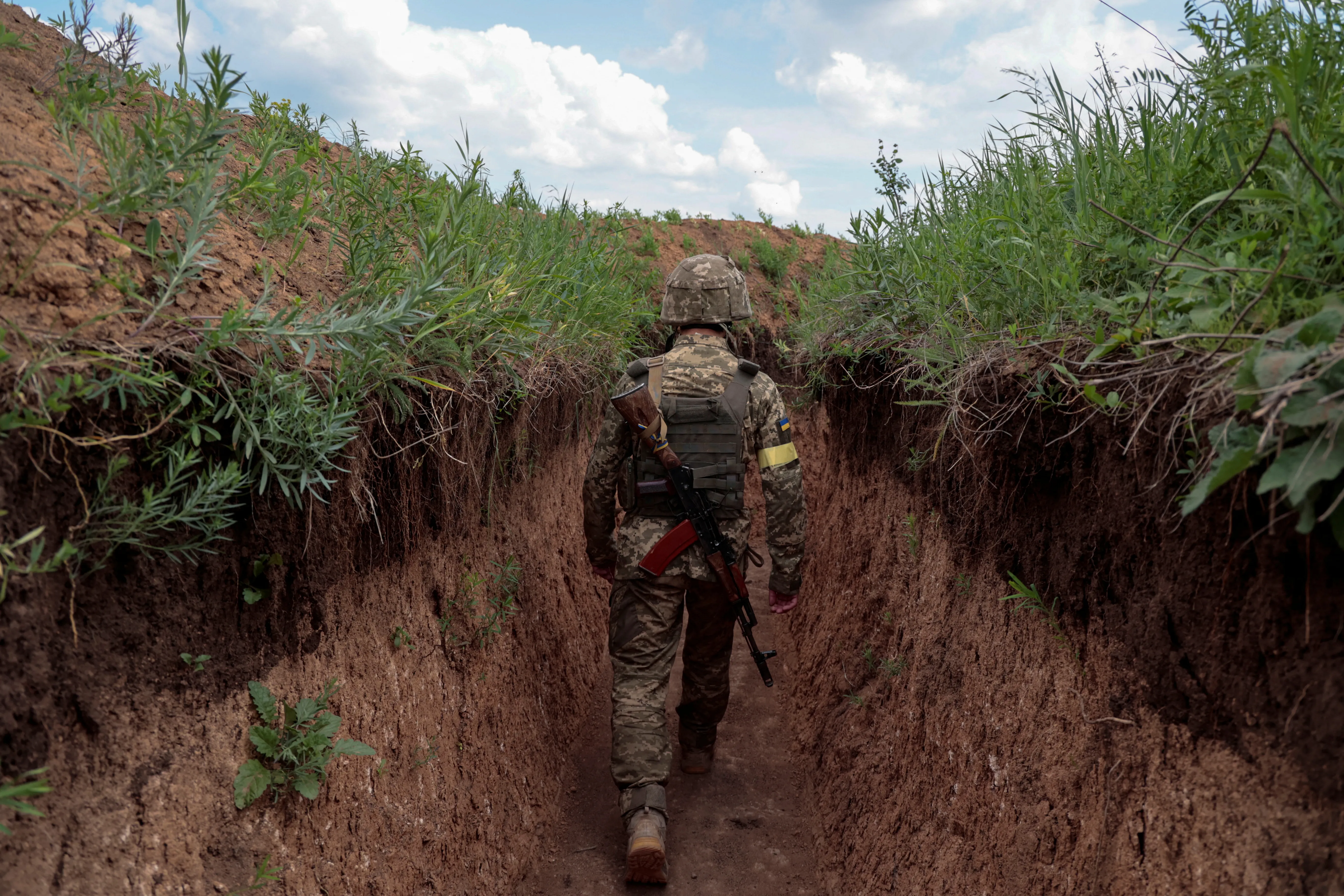
Parallels with WWI
Nothing quiet on the Eastern Front
Michael E. O’Hanlon
As I reflect on the Ukraine war one year in, the many parallels with World War I haunt me.
The similarities, or at least strong echoes, begin with the causes of conflict. Old-fashioned imperial ambitions and rivalries were key then, and in the case of Moscow, they have been important here too.
But it is in the war’s actual combat dynamics where the World War I analogy may apply best, even if of course they are not exact. At the tactical level, the heavy use of artillery constitutes an obvious parallel, as does the widespread use of trenches to protect against it. In this conflict, as in World War I, aircraft have been important but not too important; the same is true of tanks so far. Offensives have been possible in both wars; for example, on the Western Front, the front lines moved considerably in both 1914 and 1918. But such offensives tend to be difficult, costly in casualties, and inconclusive in strategic effect. Where weapons have improved, countermeasures often partially cancel out their advanced characteristics. For example, much Russian artillery today is still unguided, as in World War I, but even those weapons that are more precise can often be partly countered through jamming, defensive measures like deeper trenches, dispersal of combat forces, and other responses.
I fear there could be another echo of World War I in today’s conflict — the distinct possibility that we could be in for a long war. Few expected as much, of course, in the summer of 1914, when leaders widely expected that “the boys will be home before the leaves fall” or at least before Christmas. But after September 1914’s so-called “Miracle on the Marne,” in which the Entente Powers stymied Germany’s attempt at Paris, and subsequently, the inconclusive “race to the sea” around Ypres, Belgium, stalemate settled in. By year’s end, there was a trench line nearly 500 miles long from the English Channel to the Swiss Alps, and the parties settled in for a protracted struggle. Each winter, industry would churn out prodigious amounts of weaponry as generals would plot new offensives for the coming spring and summer. But until 1918 at least, these efforts proved generally futile. Front lines barely moved for about three years.
If proposed terms of peace are too lenient, Russia may be able to attack again after months or a few years of preparation. Alternatively, if they are too tough, Russia may wind up destitute, angry, and vengeful.
Admittedly, that was the Western Front in World War I. The Eastern Front, including today’s Ukraine, was usually more fluid. Also, today’s fight features precision weaponry, drones, and exquisite intelligence that the parties to World War I did not possess. The parallels, therefore, are far from absolute. Still, many aspects of the current fight have an uncanny precedent in World War I. It seems distinctly possible that the durations of the two wars could wind up similar as well — we will have to see — though this war could be shorter or, heaven forbid, even longer. That will call for continued Western resolve in helping Ukraine over the long haul.
Avoiding a forever war in Ukraine may also hinge on a smart strategy for eventual negotiations — even if now is not yet the time. This is where the echoes of World War I are particularly poignant. The Versailles peace wound up establishing the predicate for World War II more than producing stability; it is for that reason that historian Margaret MacMillan entitled her history of the conflict The War that Ended Peace.
The lessons for today are twofold. If proposed terms of peace are too lenient, or if there is simply a cease-fire but no durable agreement on ending the conflict, Russia may be able to attack again after months or a few years of preparation. Alternatively, if they are too tough, Russia may wind up destitute, angry, and vengeful. Right now, the latter concerns seem beside the point, given Russian President Vladimir Putin’s horrendous behavior and his disinterest in talks. But that could change. We need to be ready if it does — so that we can wind up this war better than nations a century ago were willing and able to stop World War I.
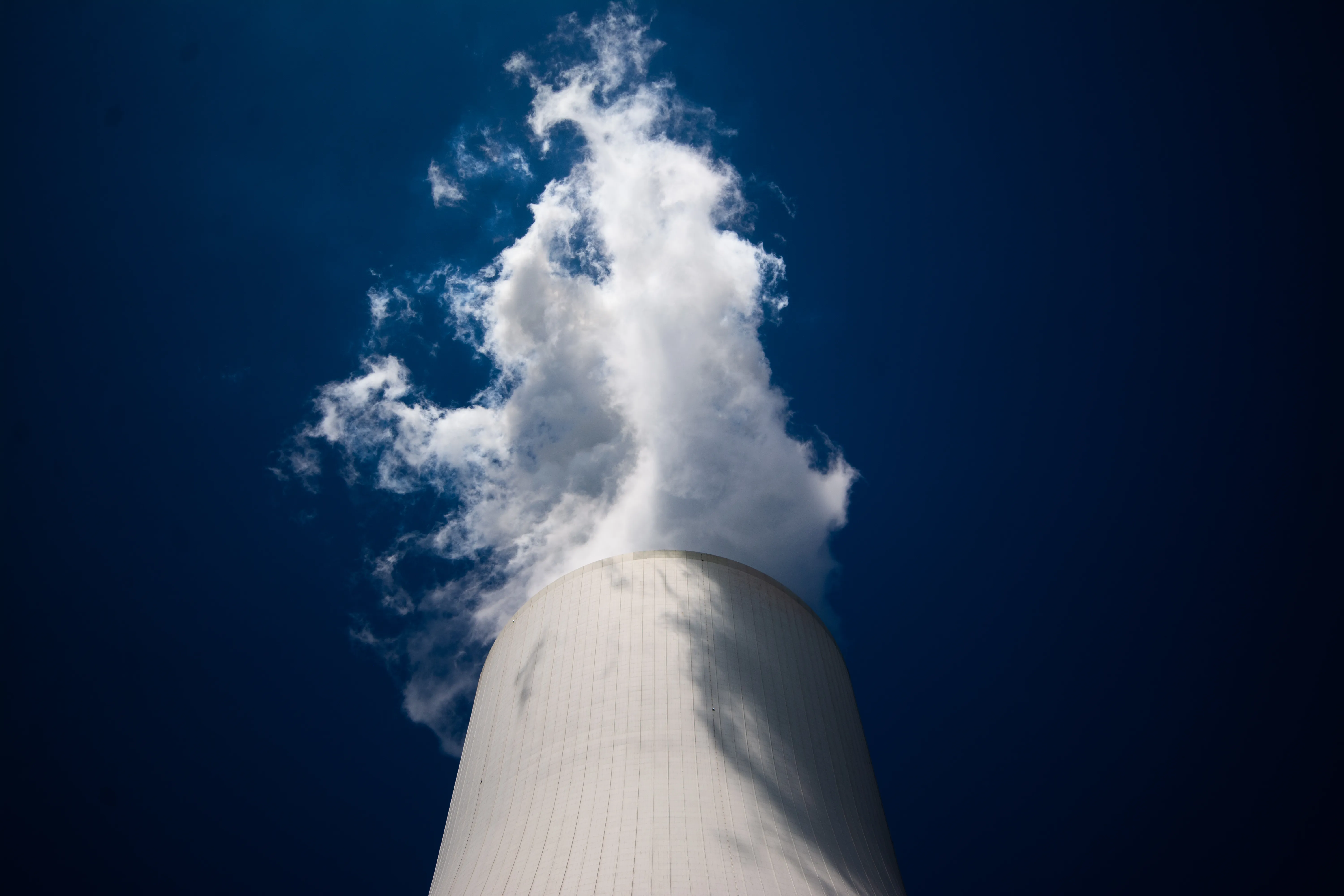
Economics
All measures short of war
David Wessel
The Russian invasion of Ukraine has taught us a lot — about Russia’s revanchism, the strength of the NATO alliance, and the nature of warfare in the early 21st century. It has reminded us of the horrors of war, especially since this time we are seeing it in almost real time on our smartphones. This is not primarily an economic event, but we have learned a few economic lessons, some of which challenge what was conventional wisdom just a year ago.
The war has been devastating for Ukraine, its people, and its economy, but the economy has done better than many predicted.
First, the Ukrainian economy is impressively resilient. Russia’s cruel assault on Ukrainian infrastructure, industry, and neighborhoods has taken an enormous human toll and devastated the Ukrainian economy. Ukraine’s GDP shrank by 30% in 2022. (That’s Great Depression territory.) The Kyiv School of Economics estimates that as of November 2022 $136 billion worth of buildings and infrastructure had been destroyed, a sum equal to about two-thirds of pre-invasion GDP. Photos and videos remind me of the pictures of Berlin, Dresden, Kassel, and other German cities at the end of World War II. But beyond that horror, Ukrainians have proved remarkably resilient amid the largest military aggression in Europe since World War II. The government is functioning, even from bunkers. Pensions are being paid. The banking system, strengthened before the invasion, is working. The central bank is setting up stations with backup electricity for Ukrainians to charge phones and tap ATMs when there are blackouts — and I’m told even in Russian-occupied territory, Ukrainians can tap their hryvnia bank accounts for transactions on their phones. Of course, the war has been devastating for Ukraine, its people, and its economy, but the economy has done better than many predicted.
Second, unprecedented Western sanctions have not debilitated Russia’s economy. We have learned that the United States and its allies can and will impose stiff economic sanctions, such as freezing what Russia says is about half of its more than $600 billion in foreign-currency reserves. Restricting Russia’s imports of high-tech (and not-so-high-tech) goods is harming its economy. Russian automakers, for example, were forced to produce cars without airbags and anti-lock braking-system sensors, an industry standard. Because of U.S. and European sanctions, Russia is forced to sell its oil at a deep discount to India and China. But Russia’s economy did not melt down. The International Monetary Fund (IMF) says Russia’s 2022 economic contraction was smaller than IMF economists anticipated, and the economy will grow a bit this year, not shrink as the IMF predicted in its October forecast. Since Russia continues to run a significant current-account surplus — it is importing less and the price of its primary export, oil, is up — it has weathered the freezing of reserves and other financial sanctions. The worst may be yet to come, though: Russia’s government budget deficit is growing as military spending soars and sanctions bite. There has been a significant loss of human capital (due to both death and emigration), and the inability to import key parts and technology points to slower productivity growth in the future. Still, economic sanctions do not seem to have influenced Russian President Vladimir Putin’s aggressiveness on the battlefield.
Third, Russia is an unreliable energy supplier. A year ago, the notion that Europe could wean itself off Russian energy imports seemed far-fetched. No longer. When this war ends — and it will someday — Russia will find that Europe is no longer a lucrative market for its natural gas. Germany is acquiring floating terminals so it can import liquified natural gas from the United States and Qatar — and will add capacity over the next few years. It will be a long time — if ever — before Europe looks to Russia to satisfy its appetite for petroleum and natural gas. Russia probably will find other markets eventually, though that is easier for petroleum (much of which travels by ships) than for natural gas (which, for Russia, requires pipelines). However, for Russia, transporting to these markets will be costlier than selling to Europe and the other buyers (e.g., China and India) probably will have more bargaining power.
Fourth, all this slowed the move to wean the world off fossil fuels. Despite the rising angst about climate change and the popularity of renewable energy, the spike in energy prices and the urgent need to replace Russian gas in Europe has led to calls to increase the production of fossil fuels outside of Russia. One energy expert quipped the other day that the major legacy of the Greens in the German coalition government may be to extend the life of coal in the country’s energy mix. And in the United States, one sign of the changing attitude toward oil and natural gas production came at S&P Global’s annual CERAWeek conference. At the March 2021 conference, newly confirmed Energy Secretary Jennifer Granholm’s rhetoric was all about investing in clean energy and weaning the nation off of fossil fuels to combat climate change. At CERAWeek 2022, her message was different: “We need more supply. Right now, we need oil and gas production to rise to meet current demand.”
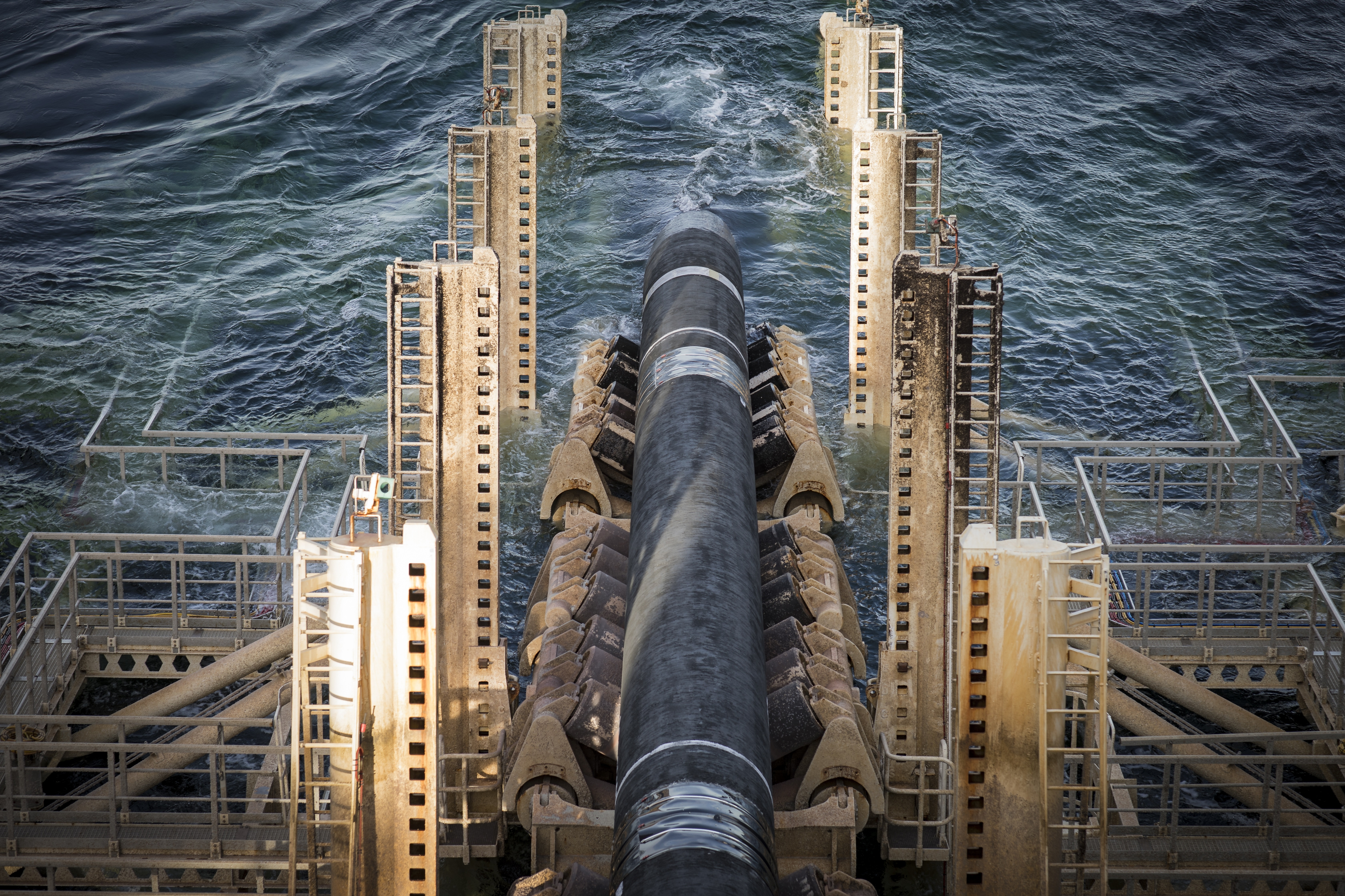
Energy
Unpleasant trade-offs
Samantha Gross
In the energy policy world, we refer to the challenge of providing sustainable, secure, and affordable energy as the “energy trilemma.” Policy focus in recent years has been on the sustainable part of the equation, given the imperative of preventing the worst impacts of climate change. However, Russia’s invasion of Ukraine reminded us that the secure and affordable parts of the equation are also critical.
The war in Ukraine is disrupting energy markets all over the world, as both Russia and the West attempt to use energy markets and energy interdependence to further their goals. The European Union, G-7 countries, and Australia have sanctioned Russian crude oil and oil products, an unprecedented action against one of the world’s largest oil exporters, in an attempt to reduce an important source of funding for Russia’s war machine. Russian oil and oil products can avoid the sanctions if they are sold below specified prices. The effectiveness of “price caps,” as the mechanism is called, is uncertain so far.
But unquestionably, the European natural gas market has been hardest hit by the energy impacts of the war. Russia is weaponizing its gas supply to try to soften European support for Ukraine. In 2021, Russia supplied nearly 40% of Europe’s total natural gas consumption, imported mostly through pipelines. Slowdowns in gas deliveries started before the war, in the fall of 2021, when the state-owned Russian gas provider Gazprom did not fill gas storage facilities it owned or controlled in Europe in advance of the winter. Since that time, gas flows have slowed to a trickle. Little gas was flowing through the Nord Stream pipeline from Russia to Germany in September 2022, when an act of sabotage damaged both that pipeline and its completed, but not operational, twin, Nord Stream 2. The culprit is not yet known.
Europe has not wavered in its support for Ukraine, but greatly reduced natural gas supply has brought hardship to European governments and citizens. European gas prices reached their highest level ever in August 2022. Heading into the winter, Europeans were concerned not just about high prices, but about actual shortages, potentially requiring shutdowns of gas-reliant industries. In response, the European Union established a plan for member states to reduce their gas demand 15% by March 2023 and prioritized sectors to receive gas in case of shortage. Subsidies are also blunting the impact on gas consumers of tight supply and high prices, but at great expense to EU governments. Subsidies and other policies to cope with the natural gas crisis cost 1.7% of GDP in Germany, 2.3% in Spain, 2.8% in Italy, and 3.7% in Greece.
In addition to financial impacts, reduced natural gas supply required some difficult decisions by the EU and member governments. For example, Germany extended the lives of its last three nuclear power plants by several months, until April 2023. The EU is supporting the development of natural gas supply in the Eastern Mediterranean and North Africa and liquified natural gas (LNG) receiving facilities on the continent. Coal consumption in Europe increased in each of the last two years as a substitute for natural gas in power generation (and to make up for shortfalls in French nuclear power generation). Each of these decisions would have been nearly unthinkable before the crisis.
Although Europe has managed to dodge an energy crisis, more challenges lie ahead, and not just because next winter might be colder.
Despite fears of idled factories and cold homes, Europe is surviving the winter quite well, and natural gas prices are now below their prewar level. LNG has been a savior for Europe, although there is not enough LNG in the world to make up for the loss of Russian pipeline gas. Europe’s LNG imports increased by 65% in 2022 over their 2021 volume, with the United States as the largest supplier. Europe managed to enter the winter heating season, when natural gas demand is highest, with more than 90% of its reserve storage capacity filled. Reduced gas demand has been the other key factor, due to warm weather and conservation efforts and fuel switching by gas consumers. If trends continue, European gas storage could exit the winter approximately half full.
Although Europe has managed — with a lot of money, some gas conservation efforts, and more than a little good luck — to dodge an energy crisis, more challenges lie ahead, and not just because next winter might be colder. China’s economy is recovering quickly from its COVID-19 woes and is likely to increase its demand for energy, including LNG. No new LNG facilities are coming online in 2023, meaning that the global market is expected to be tight, and expensive. Europe is likely to face very high prices yet again, having already spent significant resources to get through the first round. The transition to a low-carbon energy system is the long-term answer to fossil fuel crises but cannot occur overnight. In the meantime, Europe must continue its efforts to conserve natural gas, find new sources of supply, and accelerate its energy transition.
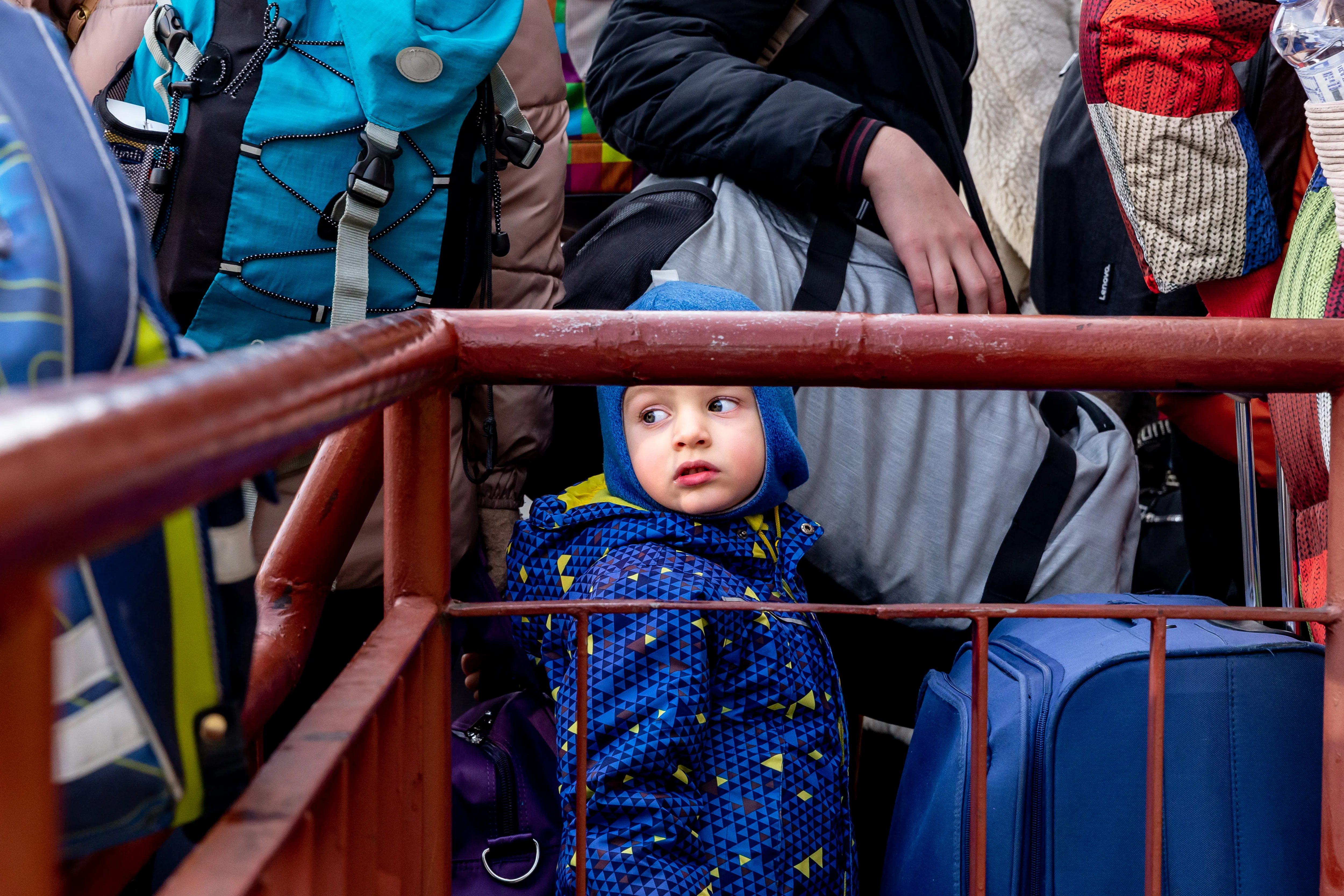
Refugees
The human cost
Sophie Roehse and Kemal Kirişci
One year of Russia’s war in Ukraine has triggered a displacement crisis of staggering speed and scale. Almost 40% of Ukraine’s prewar population has been driven out of its homes since the invasion. With no end to the conflict in sight, the future of displaced Ukrainians remains highly uncertain. For Ukraine, the return of refugees from abroad and effective support of internally displaced persons (IDPs) will determine the country’s ability to reestablish itself as an independent state, prosper, and deter future attacks on its territorial integrity and sovereignty.
Putin’s strategy of terror and displacement. Russia has waged a ruthless campaign of destruction in Ukraine. The victims are Ukrainian civilians, who have been terrorized by widespread bombing campaigns, targeted airstrikes on energy and social infrastructure, and regional massacres in Russian-controlled territories. Russian President Vladimir Putin’s tactics have prompted millions to leave the war-torn country, with over 8 million Ukrainian refugees having fled to Europe and hundreds of thousands crossing the Atlantic Ocean to seek refuge in the United States and Canada. An additional estimated 5.4 million Ukrainians are currently displaced within Ukraine, among whom almost 60% have lived outside their habitual residences for six months or longer.
Forced relocations. An ominous aspect of the displacement crisis is the fate of the almost 3 million Ukrainian refugees reported to have fled to Russia. Though some Ukrainians — especially residents of eastern Ukraine — may reasonably have gone voluntarily to escape active fighting, forced deportations of Ukrainian civilians to Russia and Russian-occupied territories have raised serious international concern. At crossing points bordering Russian-controlled areas, investigations have uncovered a “filtration process” suspected to ensure obedience with Kremlin-doctrine and deny entry of individuals deemed ideologically threatening. Those who fail screening are reportedly detained in “filtration camps,” which have been discovered across occupied and illegally annexed territories and described as a new form of Russian mass incarceration. Hundreds of thousands of children have been among these involuntary removals, including orphans relocated with adoptive Russian families and children separated from their parents.
Refugees’ decisions about whether to return or not will have tremendous demographic consequences for Ukraine, shaping its ability to recover economically, repair its social fabric, and defend its national security.
Domestic resilience and international political will are central to Ukraine’s survival. Using terror and the displacement of civilians as a war tactic is not new. One needs to look no further than Syria, where the Assad regime and Russia used forced mass migration as a way of applying international political pressure. In Ukraine, however, Putin’s plan to coerce Ukraine’s government and civil society into negotiations and create a fait accompli with annexed territories has not succeeded. The Zelenskyy government and the Ukrainian people have proven outstandingly courageous and resilient in defending Ukrainian independence. Beyond the country’s borders, societies across the European Union and in the United States have risen to the challenge of arriving Ukrainian refugees — contrary to expectations — with solidarity and temporary protection. When safe conditions are met, however, most Ukrainians abroad hope to return home. Yet the longer the conflict endures, the deeper their roots in host communities will grow. Refugees’ decisions about whether to return or not will have tremendous demographic consequences for Ukraine, shaping its ability to recover economically, repair its social fabric, and defend its national security. Similarly, ensuring the return of those internally displaced through safe transit routes as well as supporting them with housing and economic assistance will be crucial in rebuilding communities from the local level up. In reconstruction planning, Ukraine’s supporters should start to think now about strategies for incorporating refugees and IDPs.
As for Russia, its forced relocation of Ukrainian civilians constitutes an outright violation of international humanitarian laws. The laws of war articulated in the four Geneva Conventions aim to protect civilian life and minimize harm to innocent civilians in conflict situations, which Putin’s troops have violated repeatedly. Forcibly deporting people as a means of erasing Ukrainian national identity is increasingly resembling the ethnic cleansing experienced during the war in Yugoslavia, when displacement was last weaponized in Europe. Some have even argued that Russia’s actions may constitute genocide. Necessarily, the Kremlin regime and its perpetrators on the battlefield and in the state bureaucracy will have to face international legal accountability for their offenses. It is the right thing to do; but more fundamentally, it is crucial to ensure compliance with the international laws of war, to confirm respect for the inviolability of territorial integrity and national sovereignty, and to protect human life beyond Ukraine.
Acknowledgments
Editorial: Adam Lammon, Ted Reinert, Constanze Stelzenmüller
Web design: Rachel Slattery







